Volgograd
A liberal in Volgograd. Sounds no worse than “an atheist in Mecca.”
I came up with an idea to go to Volgograd before the May holidays, when I anticipated that Moscow would soon be filled with military vehicles mixed with hooray-patriots shouting “Thank you grandpop for the top spot” and wrapped in the trademark style of “Beeline”.
Some people like it, but I’m tired of seeing this cacophony every year. However, the borders were closed, and going to some city didn’t make sense, as the pandemic of victory-mania covered the whole country. So I decided to use an old, proven method: to immerse myself in the very heat of the festive absurdity. And go to the epicenter of the explosion — to Volgograd.
Until the very end, I believed that at the airport they would ask me for a visa with a note on my political views. But it didn’t happen. The lady at the check-in counter typed in “st” on her computer and only saw Istanbul and Stavropol.
“Where again? Stalin... grad?”
“Oh yes, it was renamed. It’s called Volgograd now.”
“I see, got it.”
⁂
Volgograd turned out to be a really cool and cozy city.
Monumentalism and Soviet style look appropriate in Volgograd. If in other cities, concrete monuments and military decor look as if a bureaucrat has lost their mind, in Volgograd it is just part of the landscape.
The metallurgical plant Red October. The corporate style is based on bright shades of red.
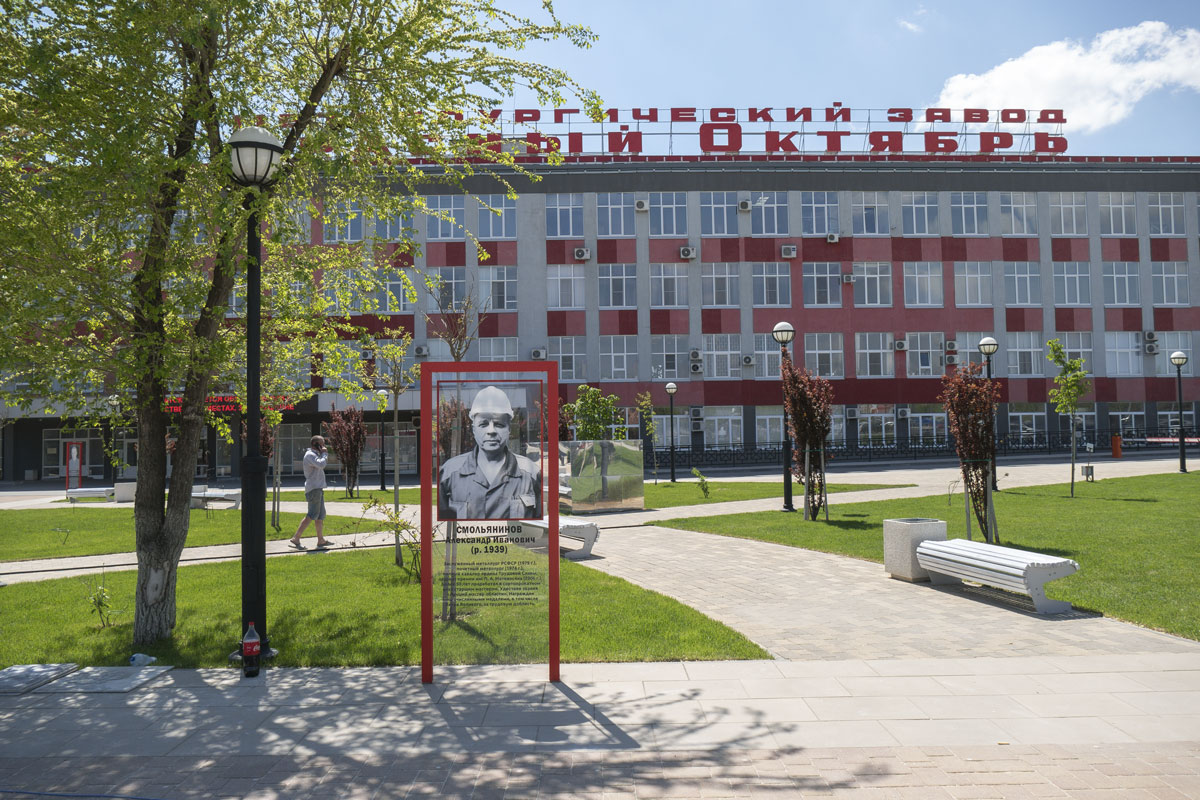
Stands with black and white photographs on transparent glass imitate honor boards from the time of the USSR.
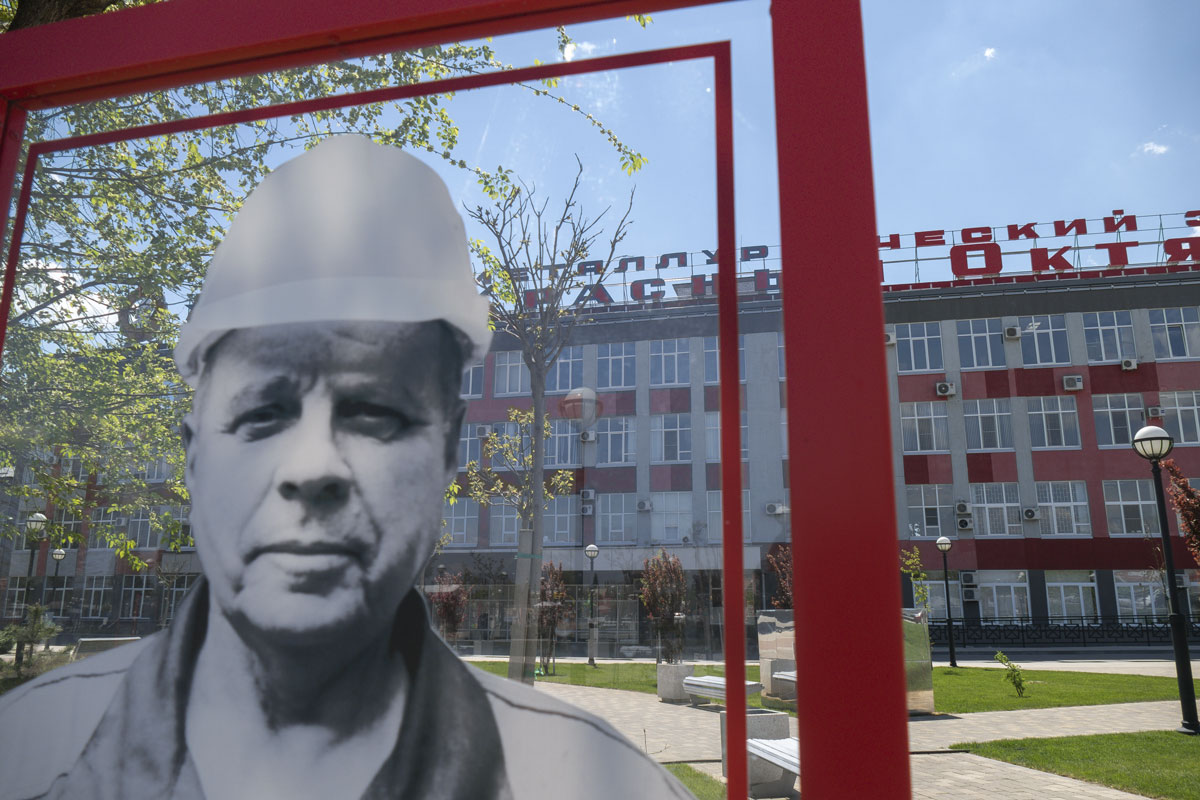
Logos in a Soviet style on the roof.
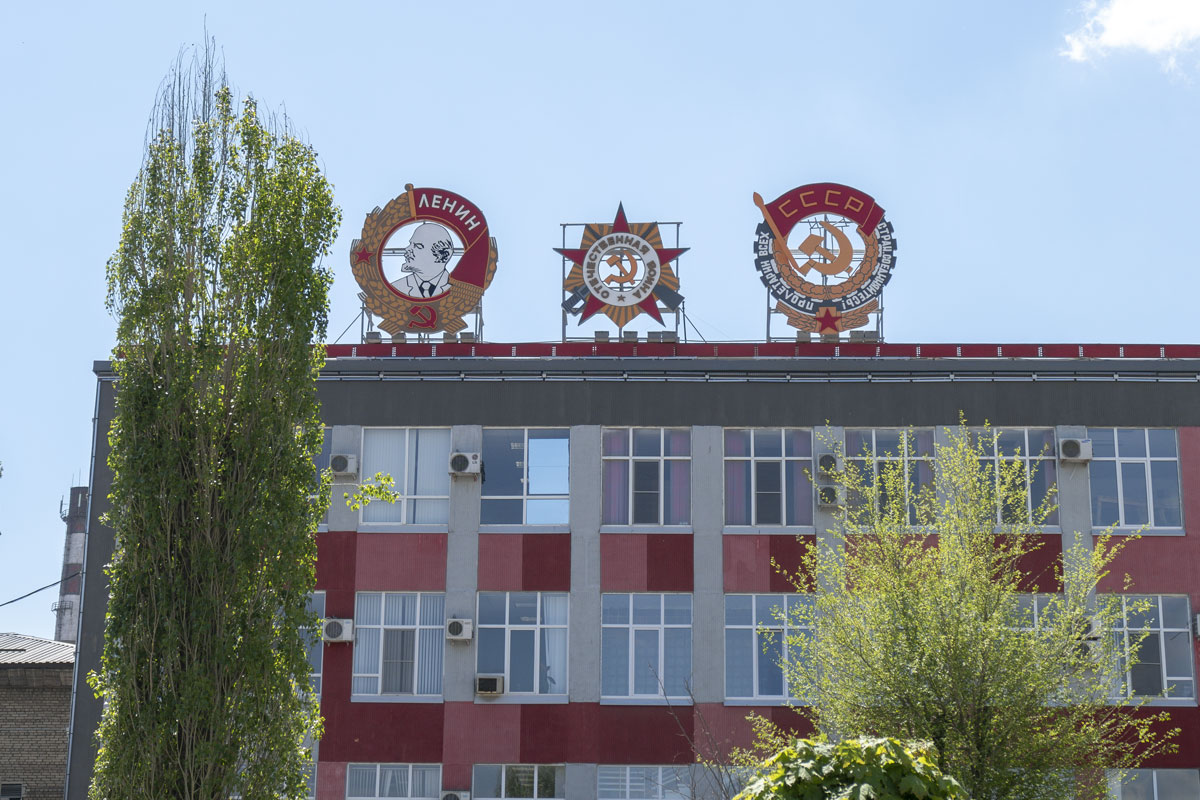
The train station building is in the Stalinist Empire style.
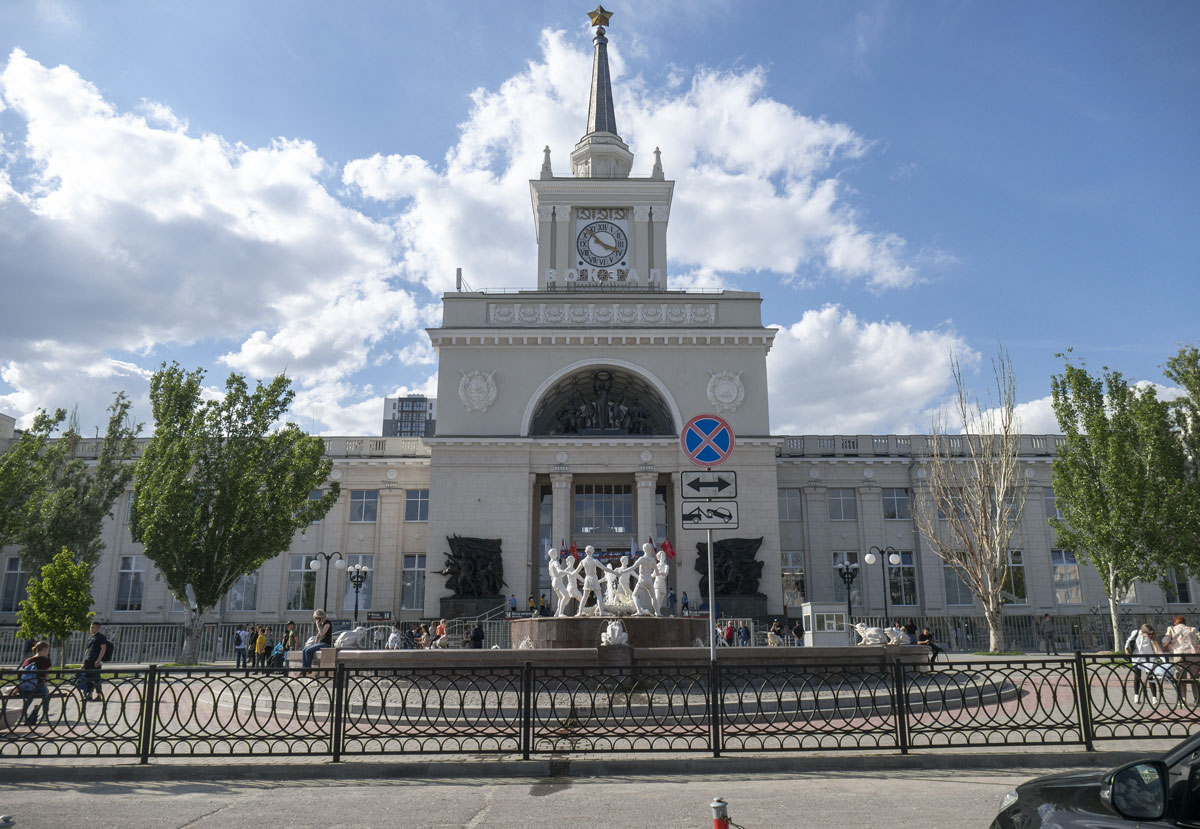
Inside there are impressive panels in the genre of Socialist Realism.

After the German air raid in August 1942, the military photographer Evzerikhin took a legendary photograph. Next to the station was a fountain consisting of children figures dancing around a crocodile named “Barmaley” — it depicted a scene from a children’s fairy tale about Barmaley. The photograph of this dance against the backdrop of burning, destroyed buildings became iconic and entered history.
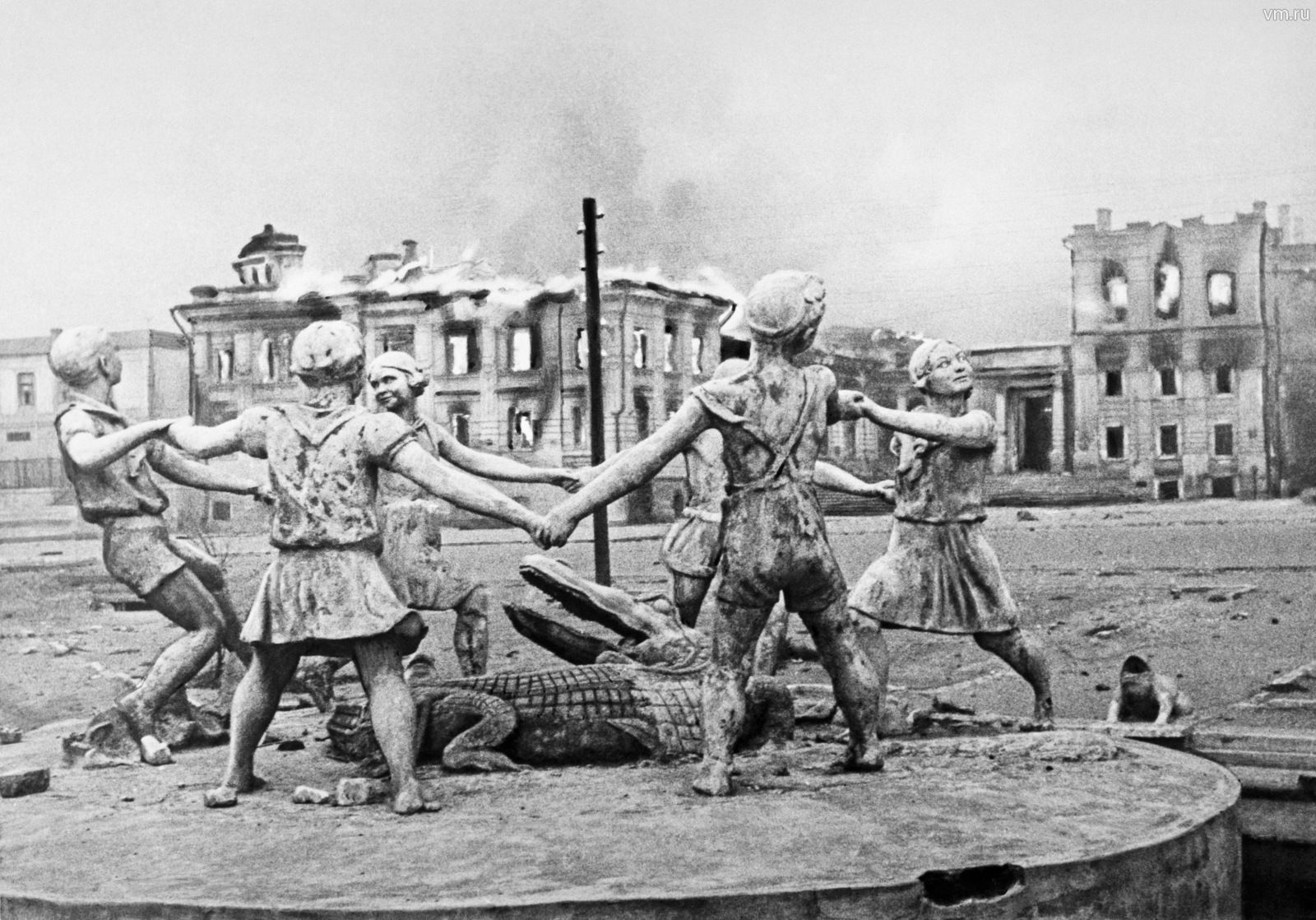
When the city was liberated from the Nazi troops, the train station was almost wiped off the face of the earth. The adjacent square lay in ruins and corpses. The fountain remained intact, but it was demolished in 1951. That’s how the memory of the war was honored in the Soviet Union.
However, in modern Russia, the fountain was restored and placed in its former location in front of the train station.
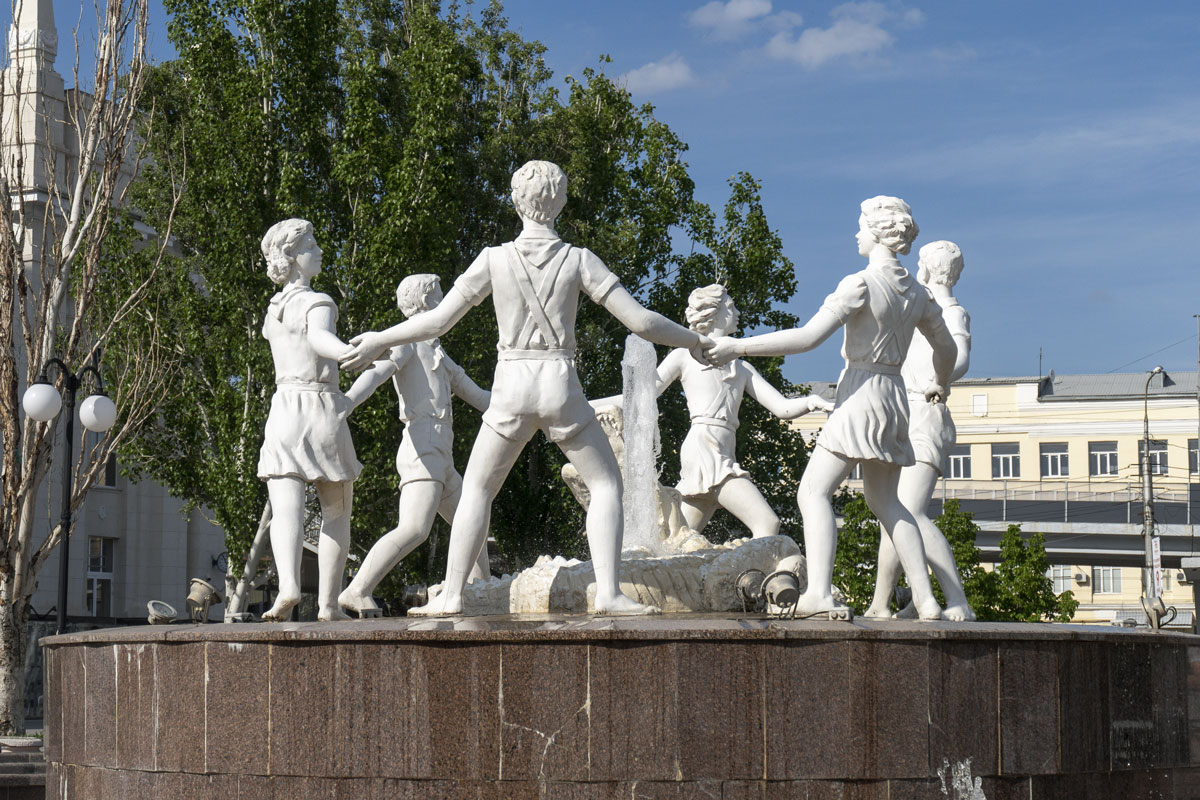
However, the replica is far from similar to the original and is made not of concrete, but of plastic. Despite this, the fountain managed to rust within a month after its opening: water began to seep inside the figures. It turned out that they were made hollow and filled with foam, which absorbed water, causing stagnation.
The main monument in Volgograd is the Motherland Calls — a huge statue of a screaming babe with a sword, which can be seen from many places in the city.
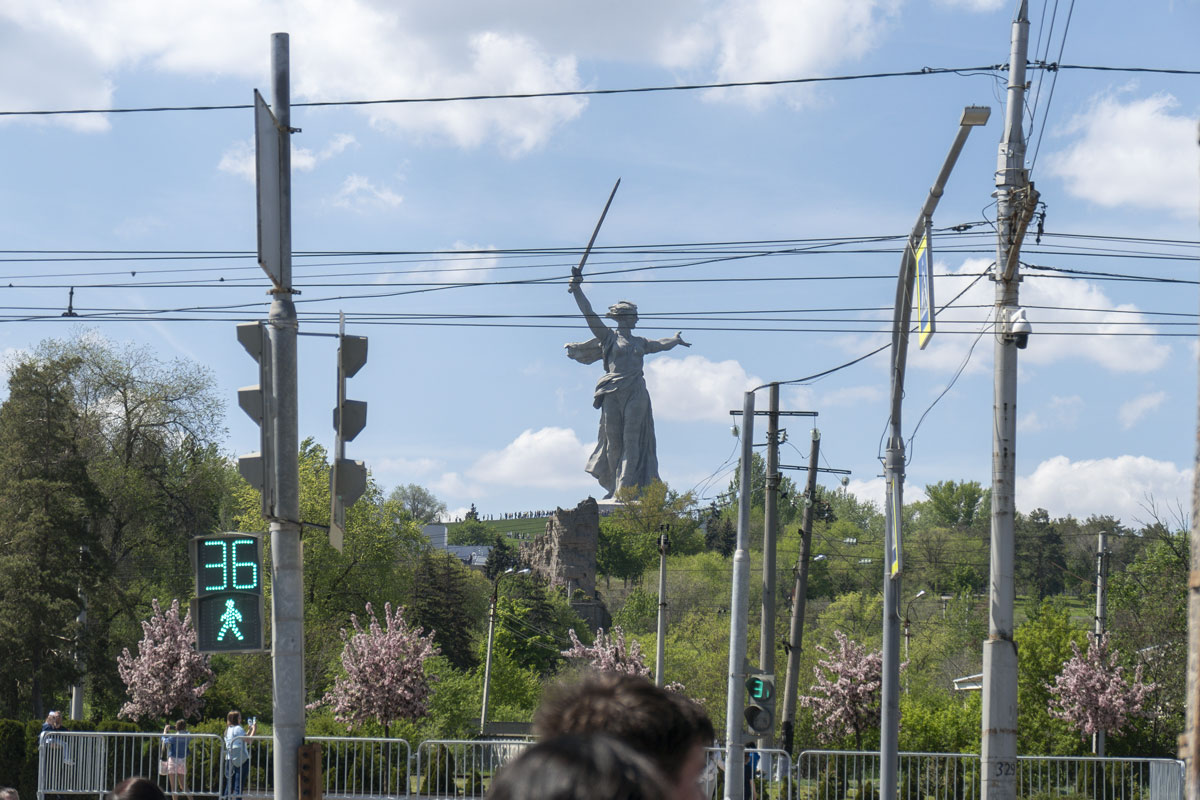
The sculpture is located on Mamayev Kurgan. The origin of this name is not known for certain, but it is assumed that the headquarters of the Golden Horde was located here. There is even a legend that Khan Mamai himself is buried in the kurgan.
During the war years, Mamayev Kurgan became one of the main battle sites in the Battle of Stalingrad. It was a strategically important height from which the entire city could be viewed. Now Mamayev Kurgan is the main memorial complex in Volgograd and probably in the whole country.
I have never seen anything like this in terms of scale. The staircase leading to the monument is decorated with long rows of red flags.
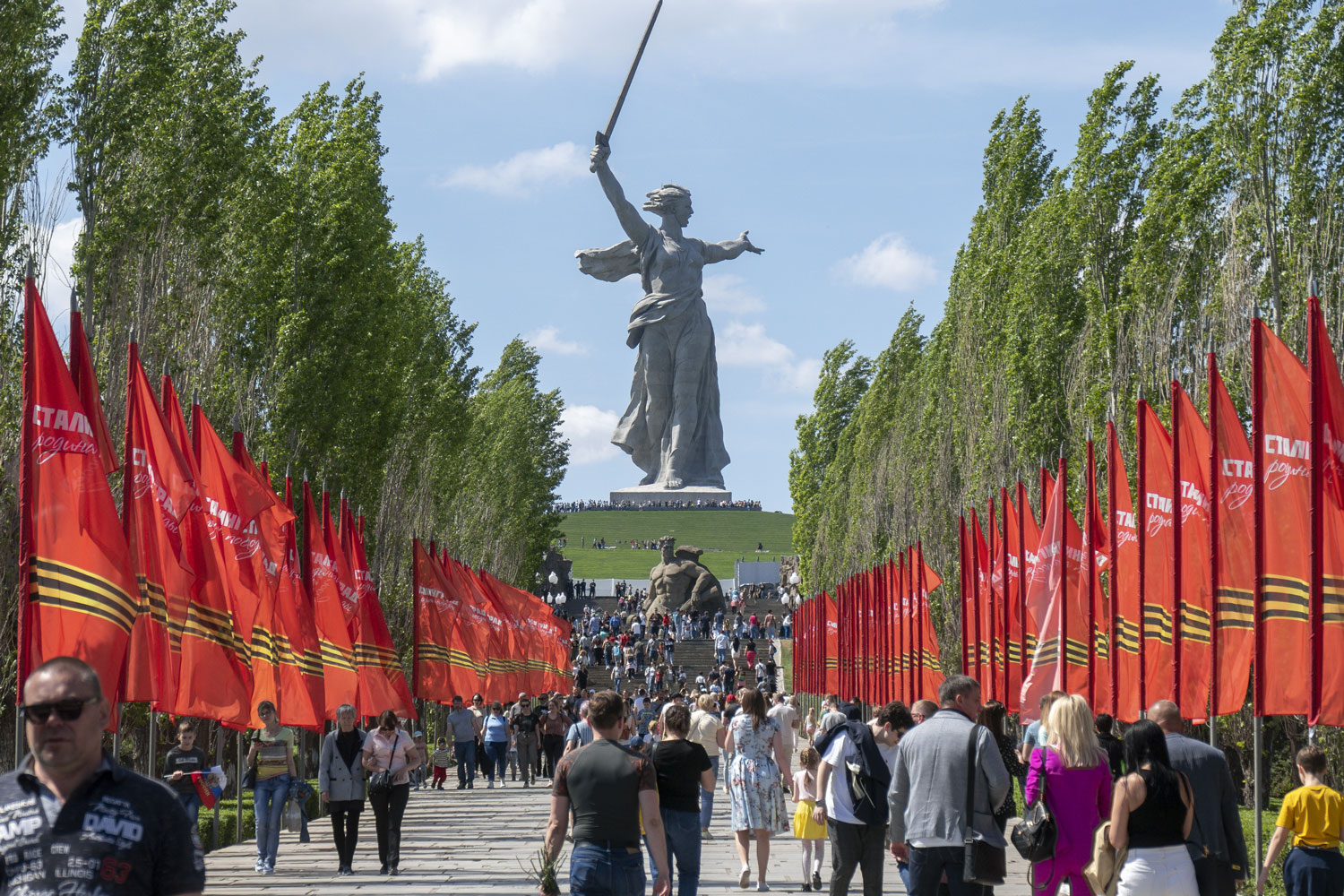
In front of the impressive Motherland Calls stands a sculpture of questionable quality by the same author, “Stand to Death”. It depicts Marshal Chuikov, the commander of the 62nd Army, which heroically defended Stalingrad.
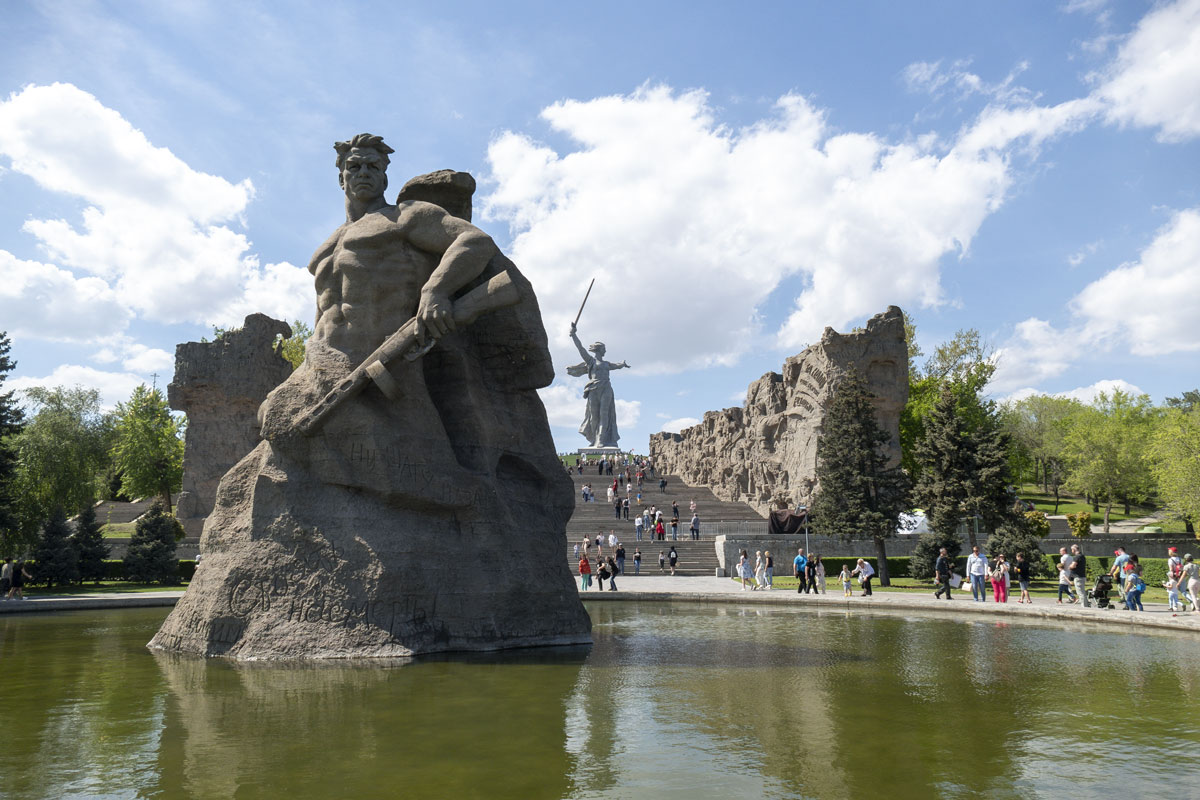
The walls on both sides of the staircase have commemorative bas-reliefs.
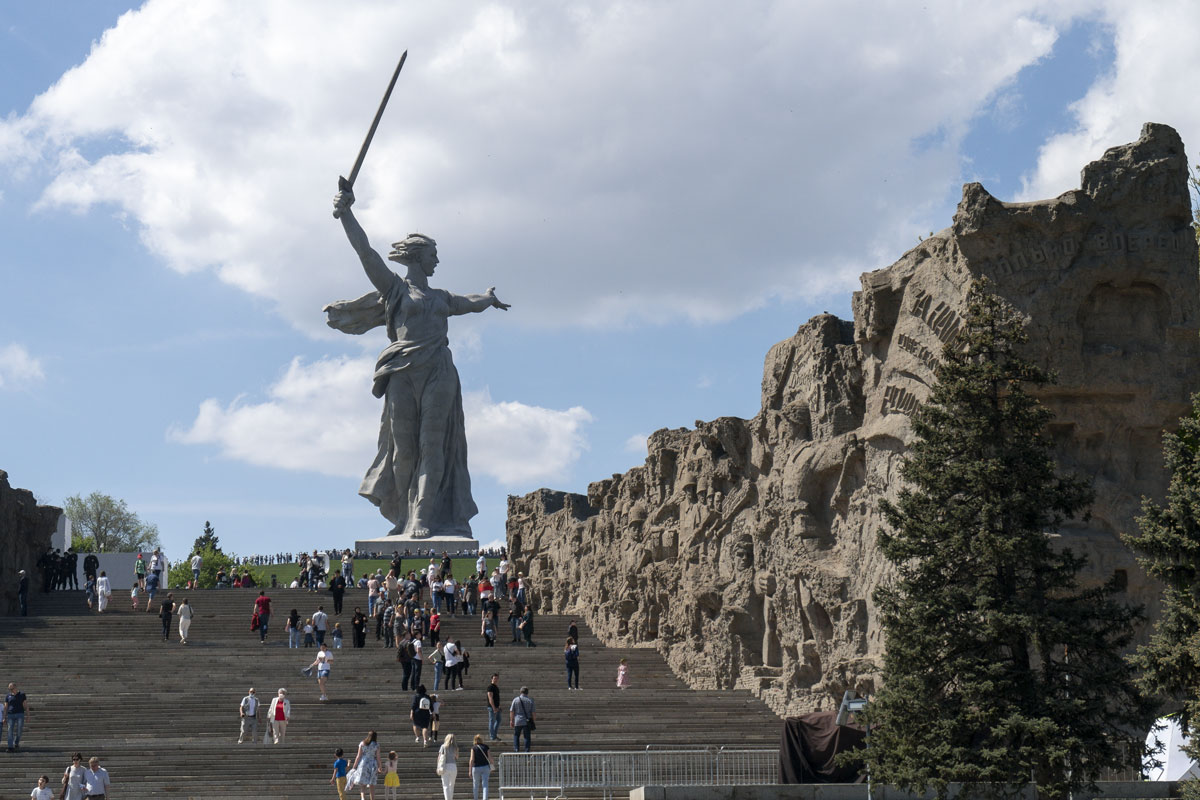
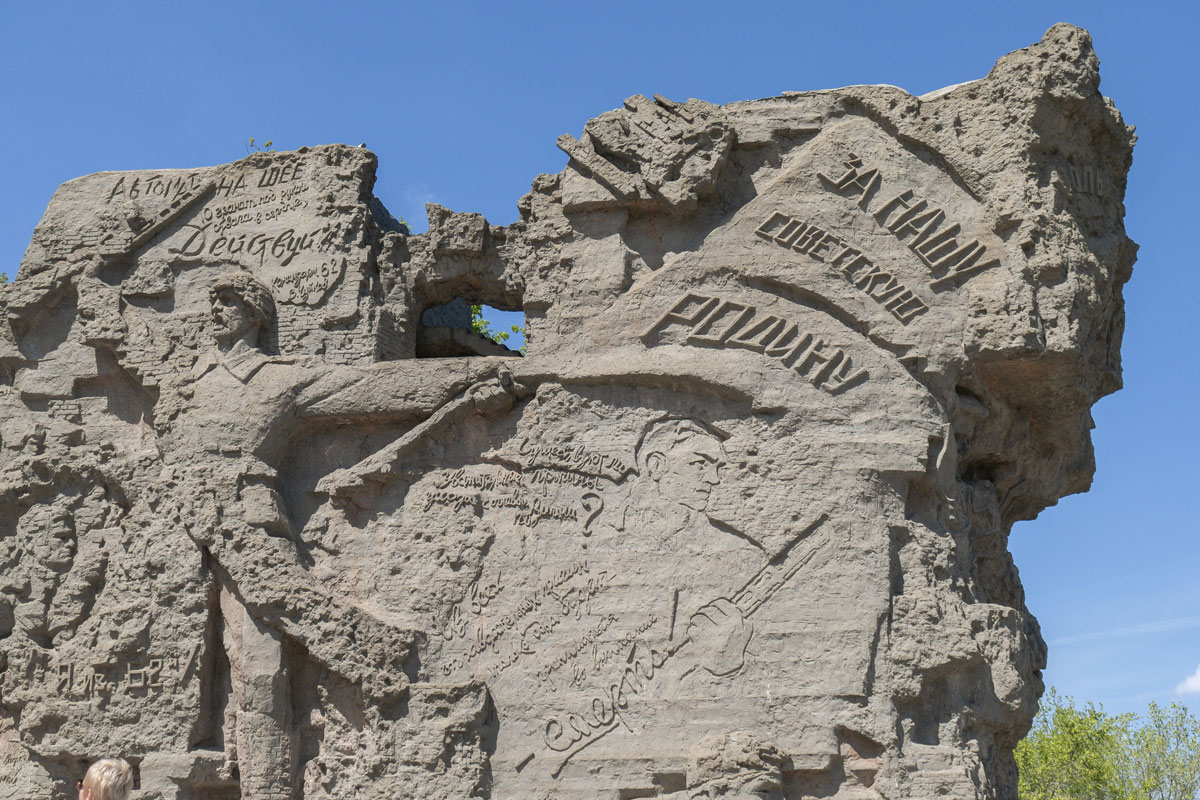
To reach the Motherland statue, one must pass through the Hall of Military Glory. It’s a very authentic hall, in the center of which there is a huge hand holding an eternal flame.
Various war memorial ceremonies are constantly held in the hall.
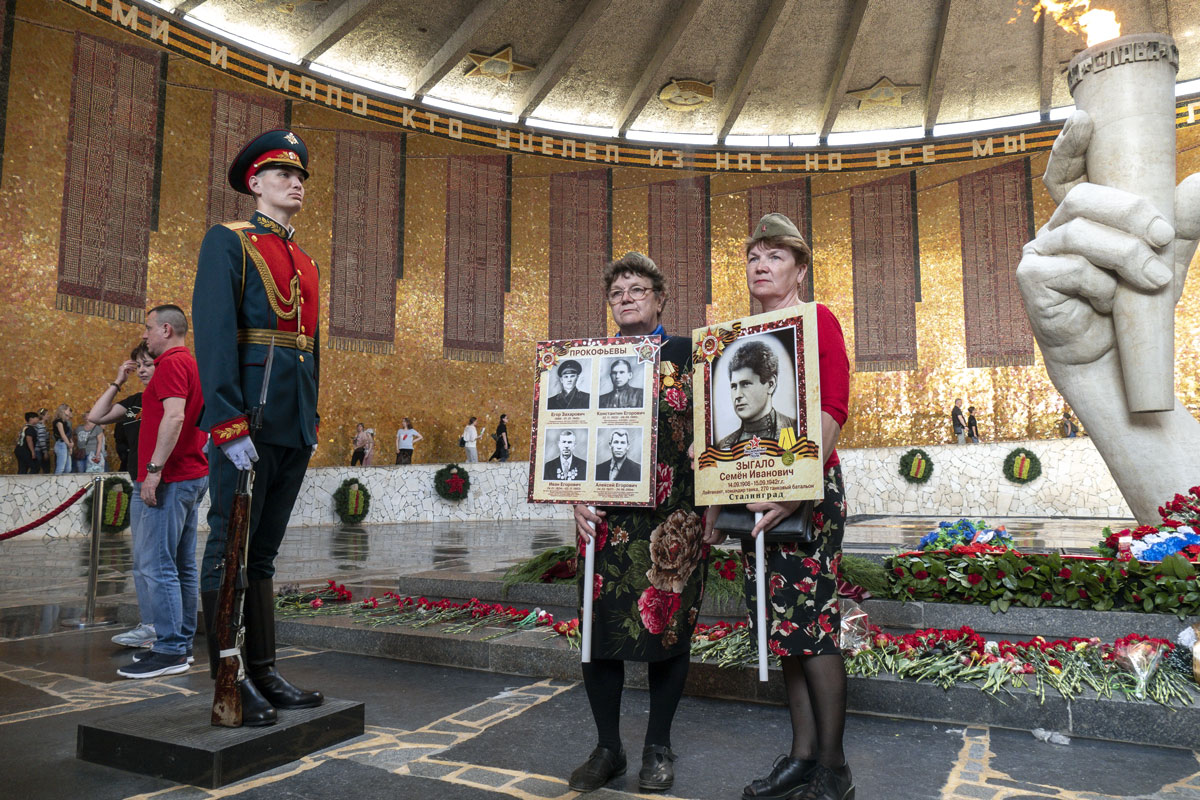
Endless lists of participants of the Battle of Stalingrad are hanging on the walls.
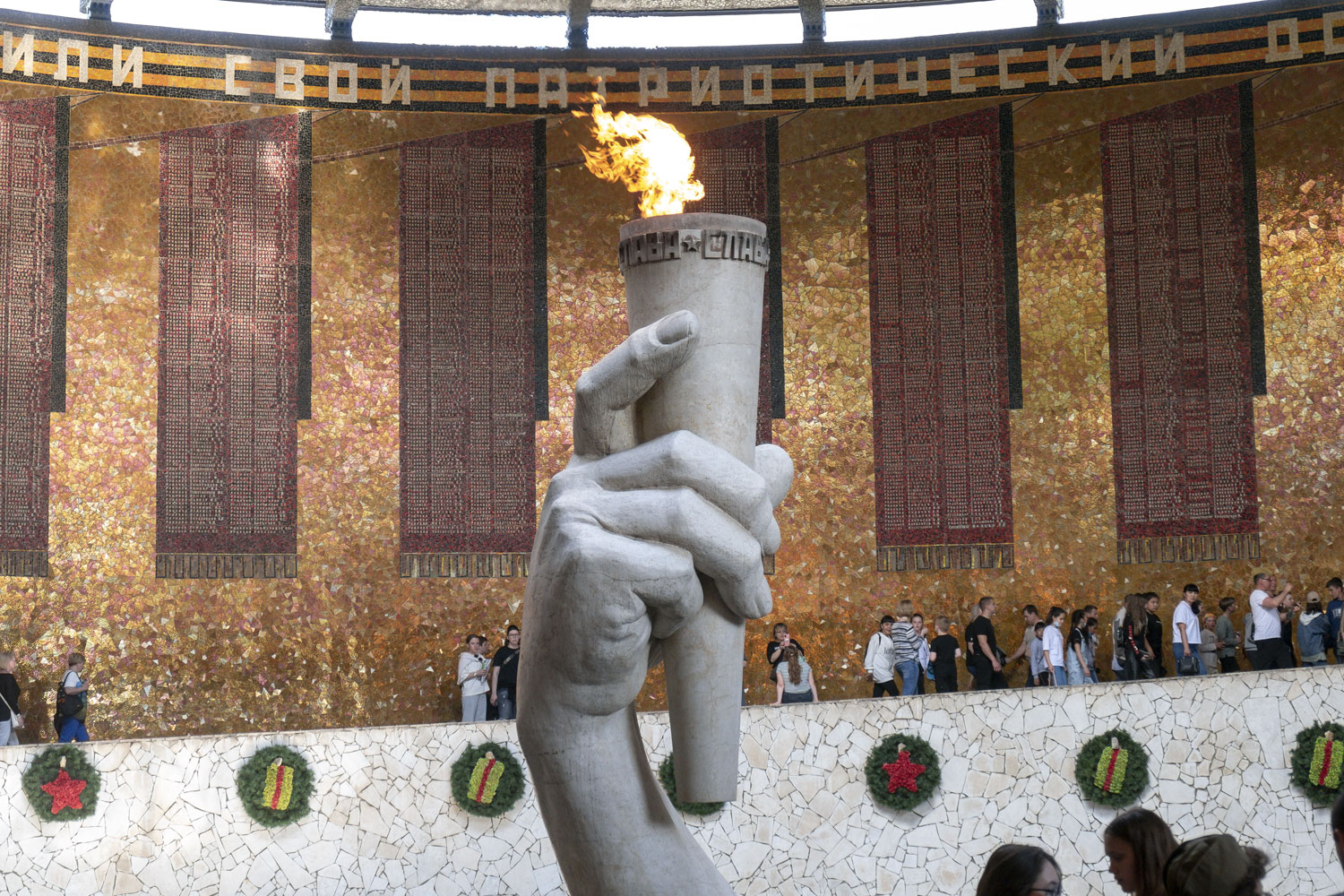
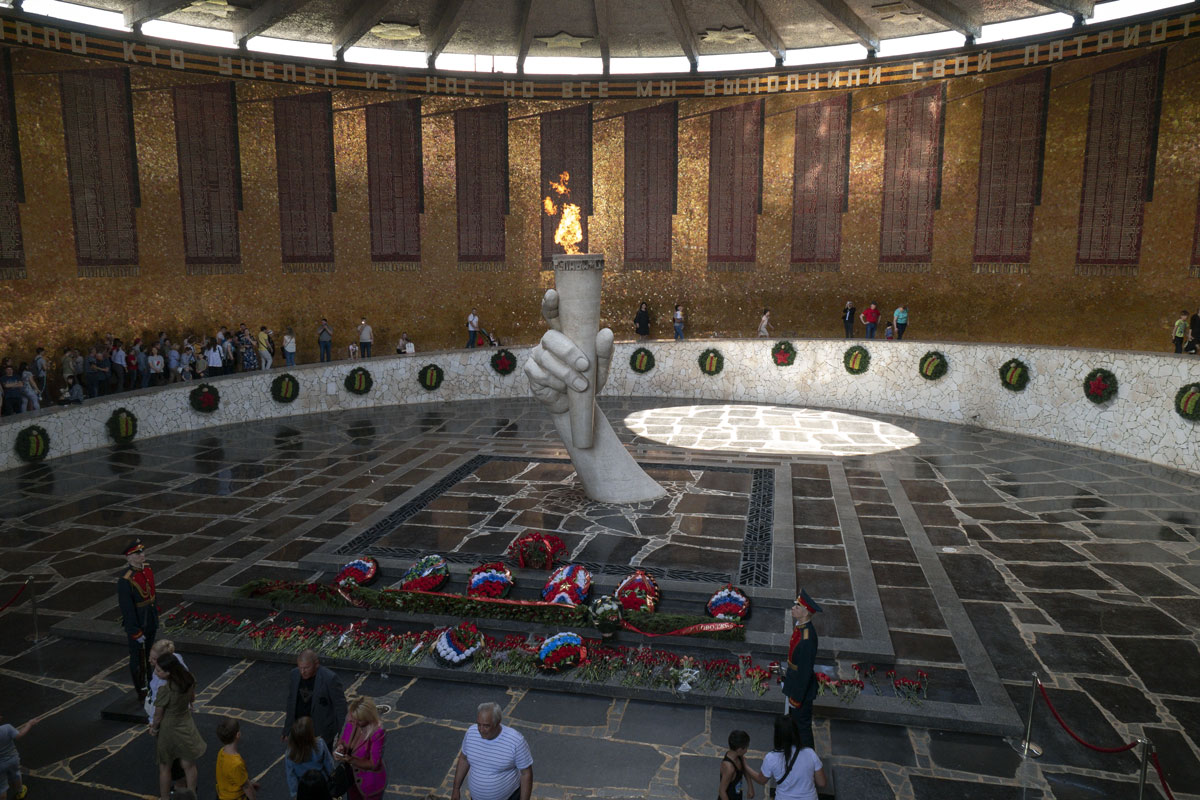
Finally, at the exit of the hall, it appears before the tourist’s eyes.
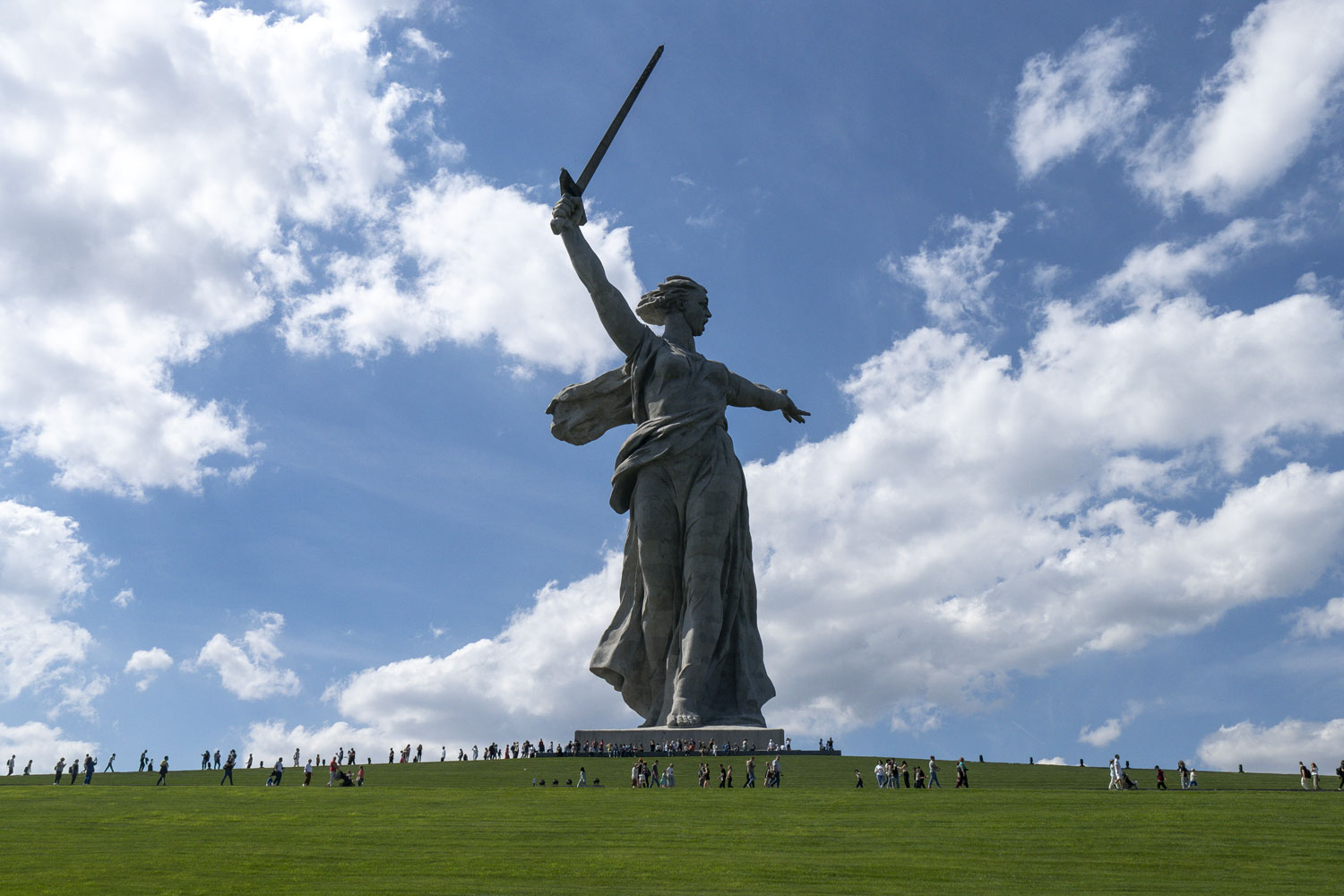
It is said that the sculptor, Yevgeny Vuchetich, himself made fun of the statue’s truly funny, gaping mouth.
The nerves before this monument are quite serious. All I hear from Volgograd is news about another TikToker who filmed himself without a shirt in front of the monument, thereby insulting the memory of the war. It seems like older generations blame the new generation for being too sensitive, but they themselves can’t take even the slightest joke at their own expense.
So you stand there and are even afraid to take a picture of this Motherland statue from a bad angle. I wonder if I could be charged for taking a classic photo with the hand?
“Using techniques of optical illusion, reduced Victory monument’s size” — up to 5 years of high security.

And the monument is truly brutal.
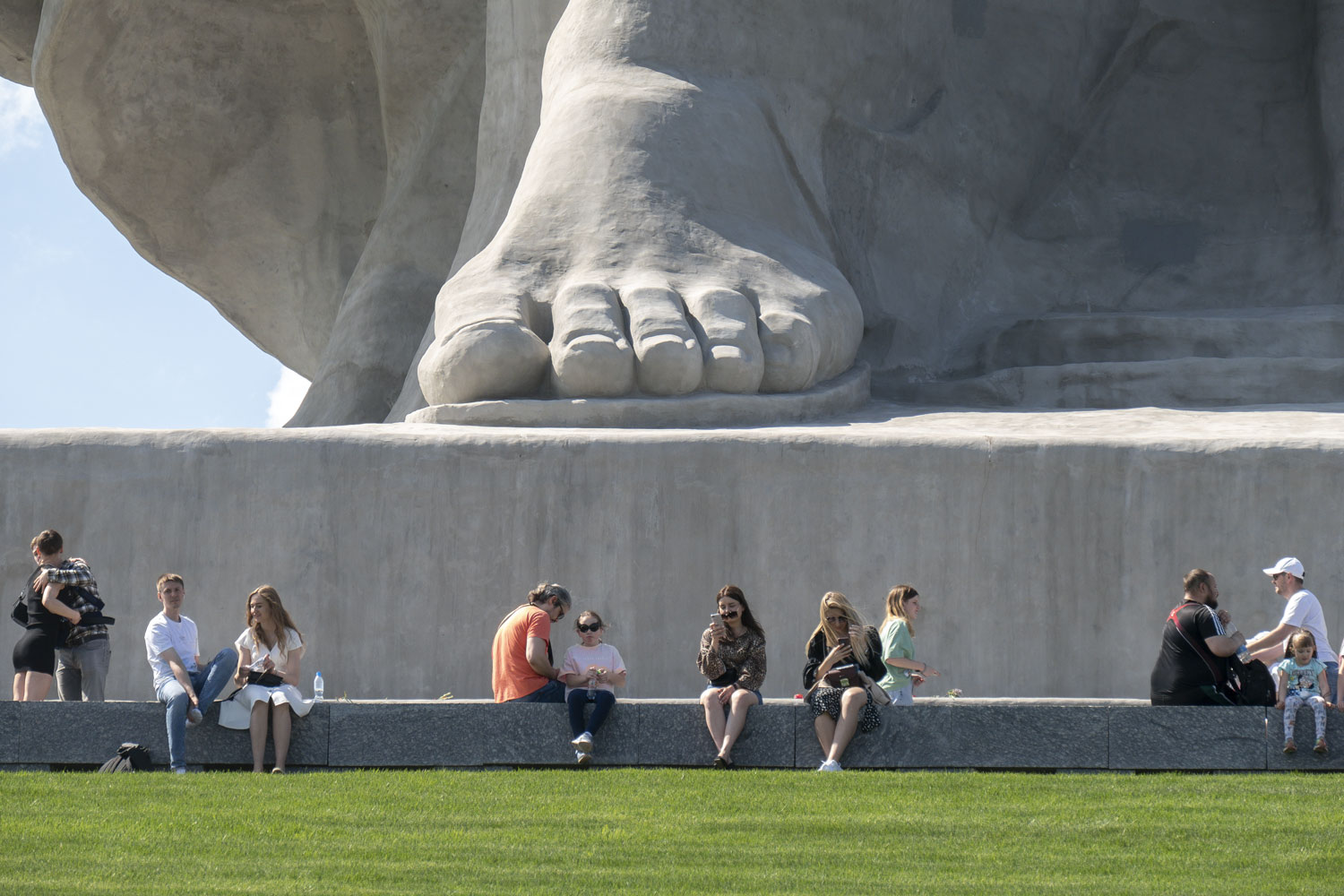
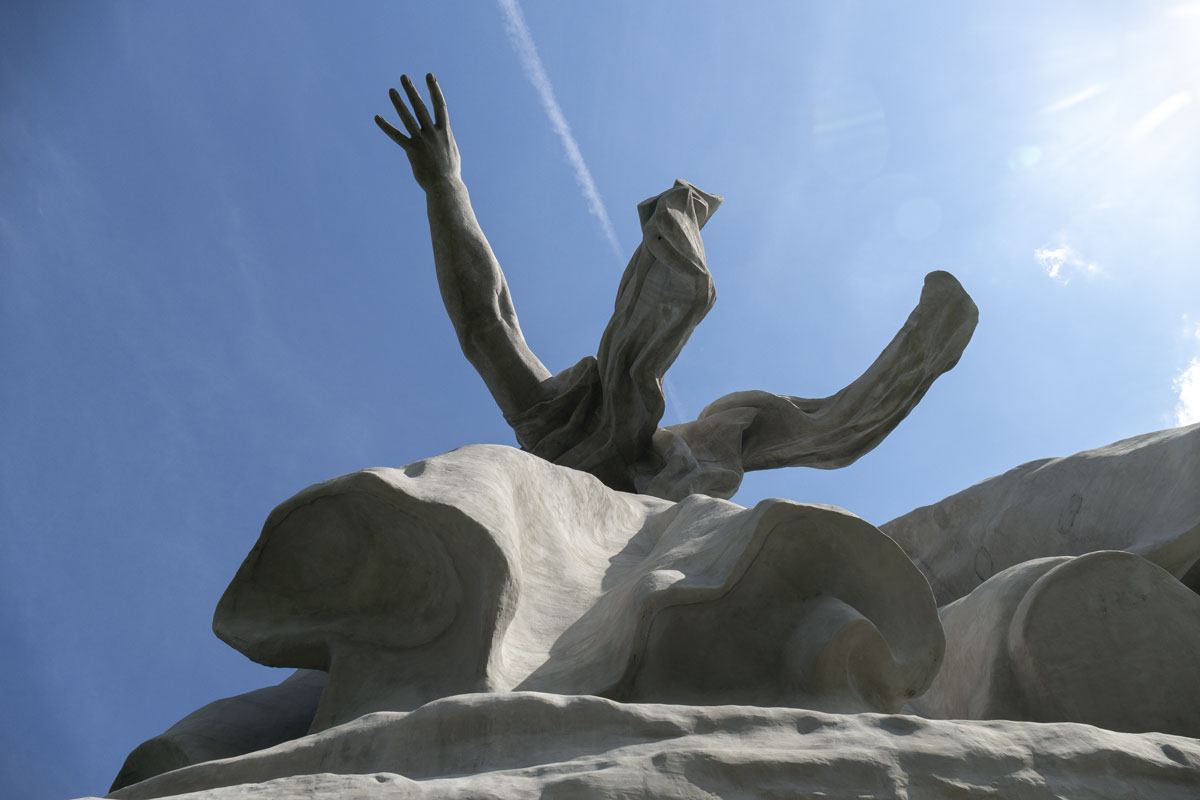
But there are monuments in Volgograd that are even more interesting. The real fantasy is the destroyed mill of Gerhardt.
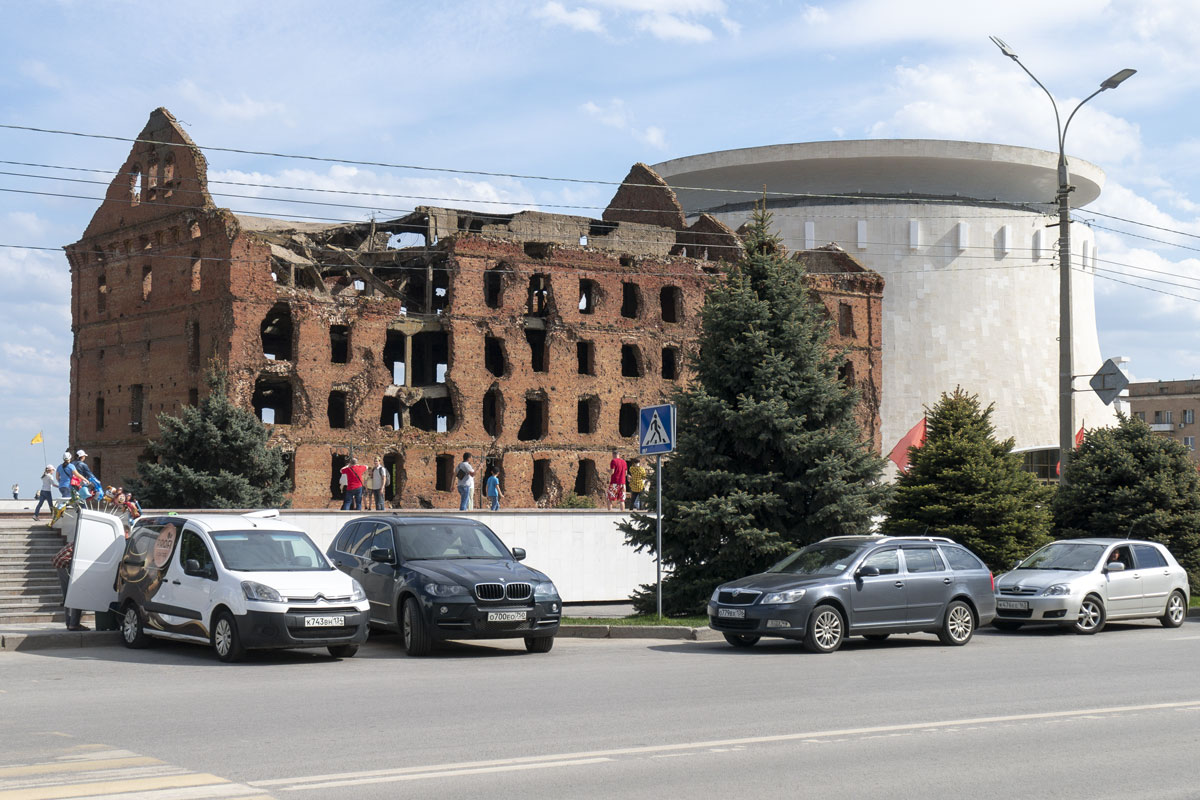
This mill was built back in 1908 by an entrepreneur named Gerhardt. The mill ground flour, smoked fish, whipped butter, and baked bread. This building was one of the first in the city built using the new technology of a reinforced concrete frame. Brick was only used for finishing.
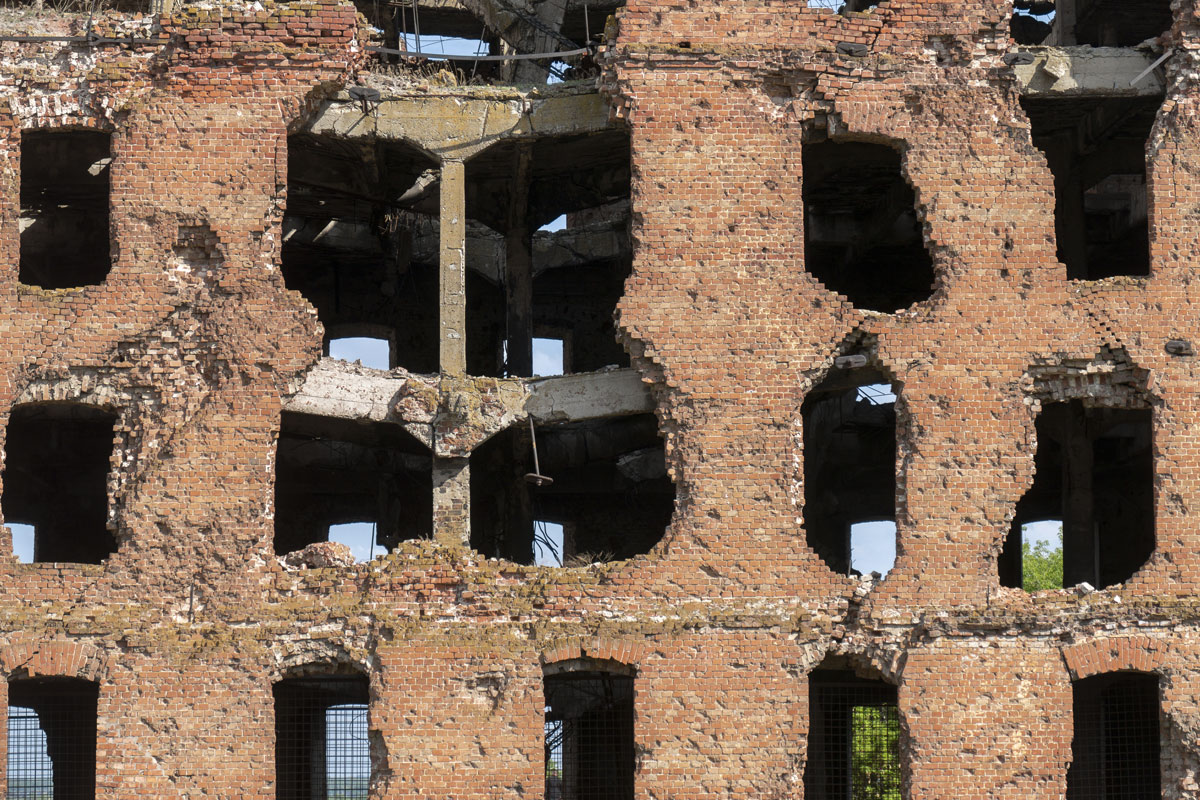
Thanks to its strong construction, the mill survived during the Battle of Stalingrad, despite being hit by dozens of bombs and shells. The mill was an important strategic point. It is the tallest building in the area. The building changed hands many times between defenders and enemies during the war.
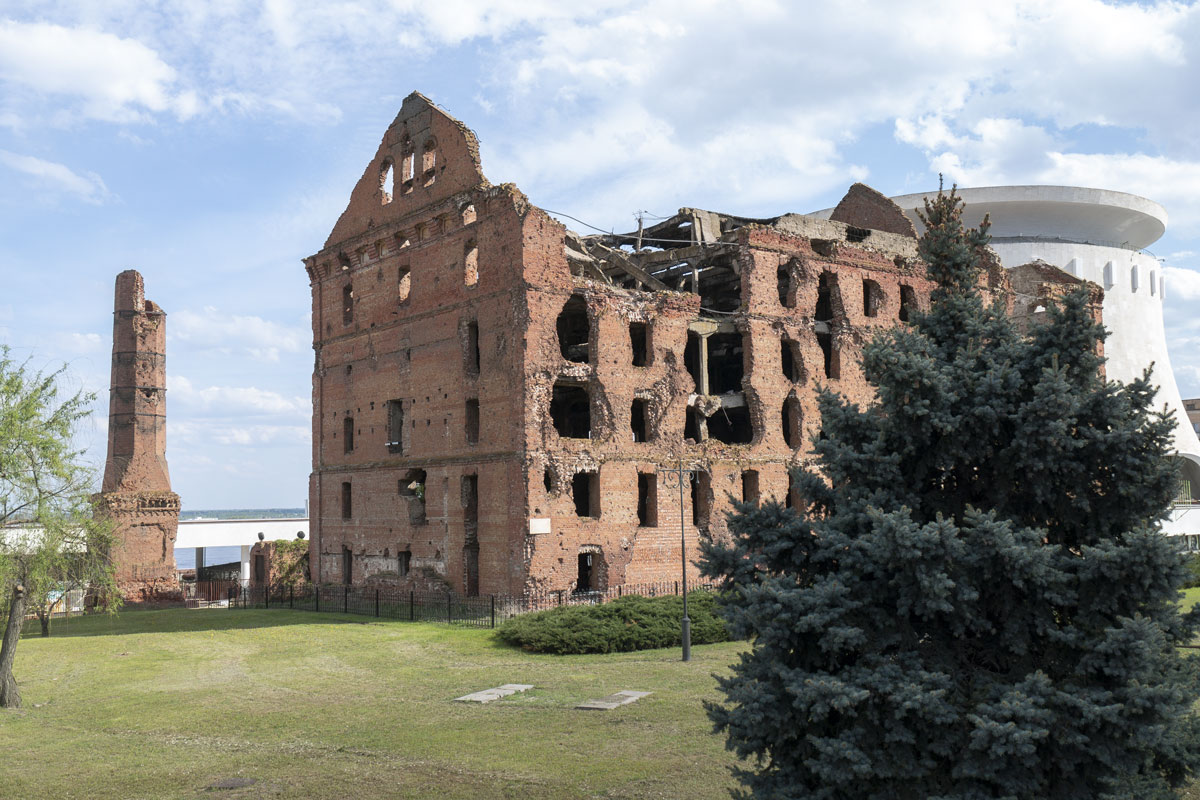
Gerhardt’s mill was badly damaged, but it was decided not to demolish it, but to strengthen and preserve it in its original form. They even brought a copy of the fountain closer to the original to it.
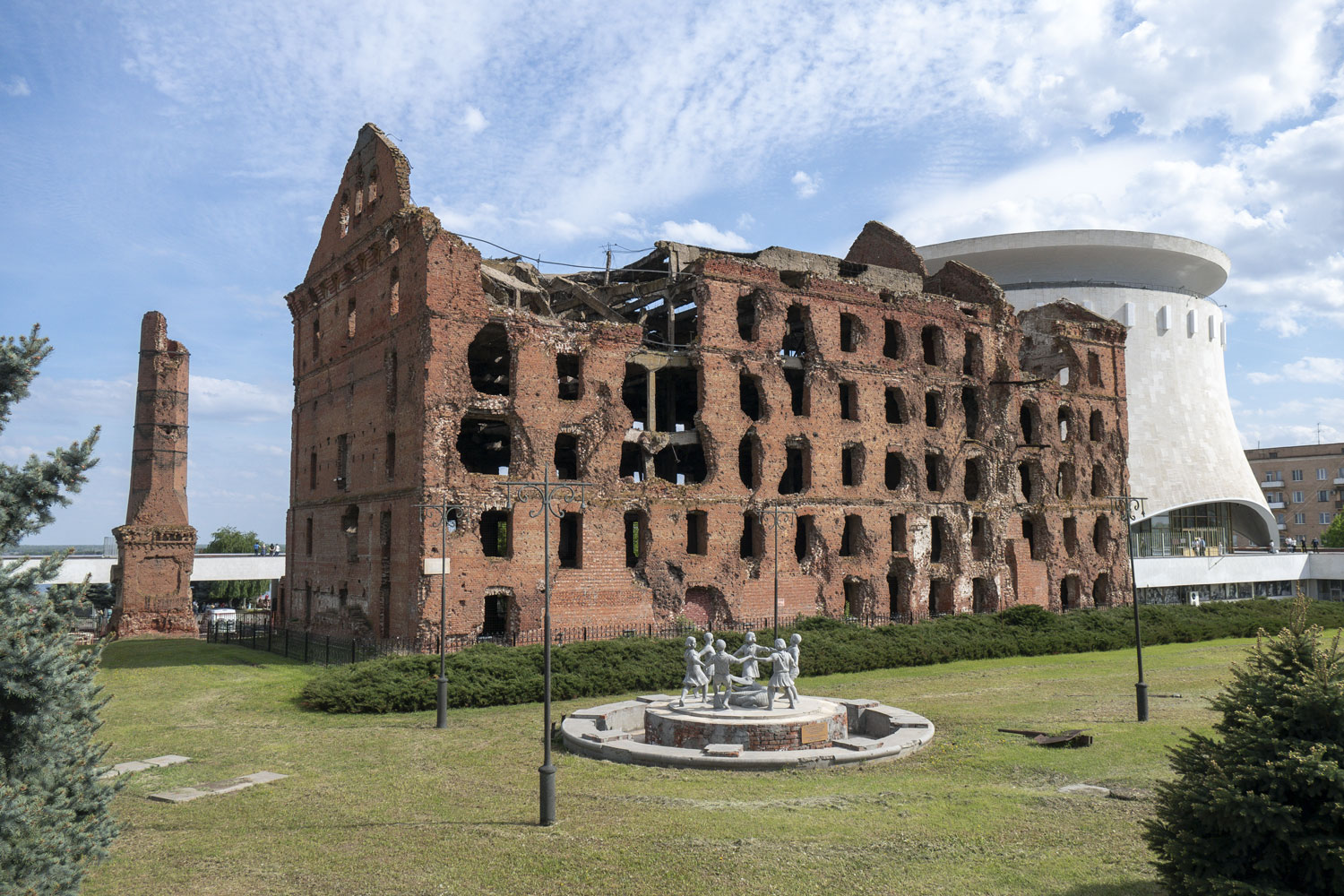
This is a real, genuine, living war memorial. It inspires real awe and horror, allowing you to truly touch the events of those years.
To touch and then immediately take your hand away: it’s good that we live in a relatively peaceful time.
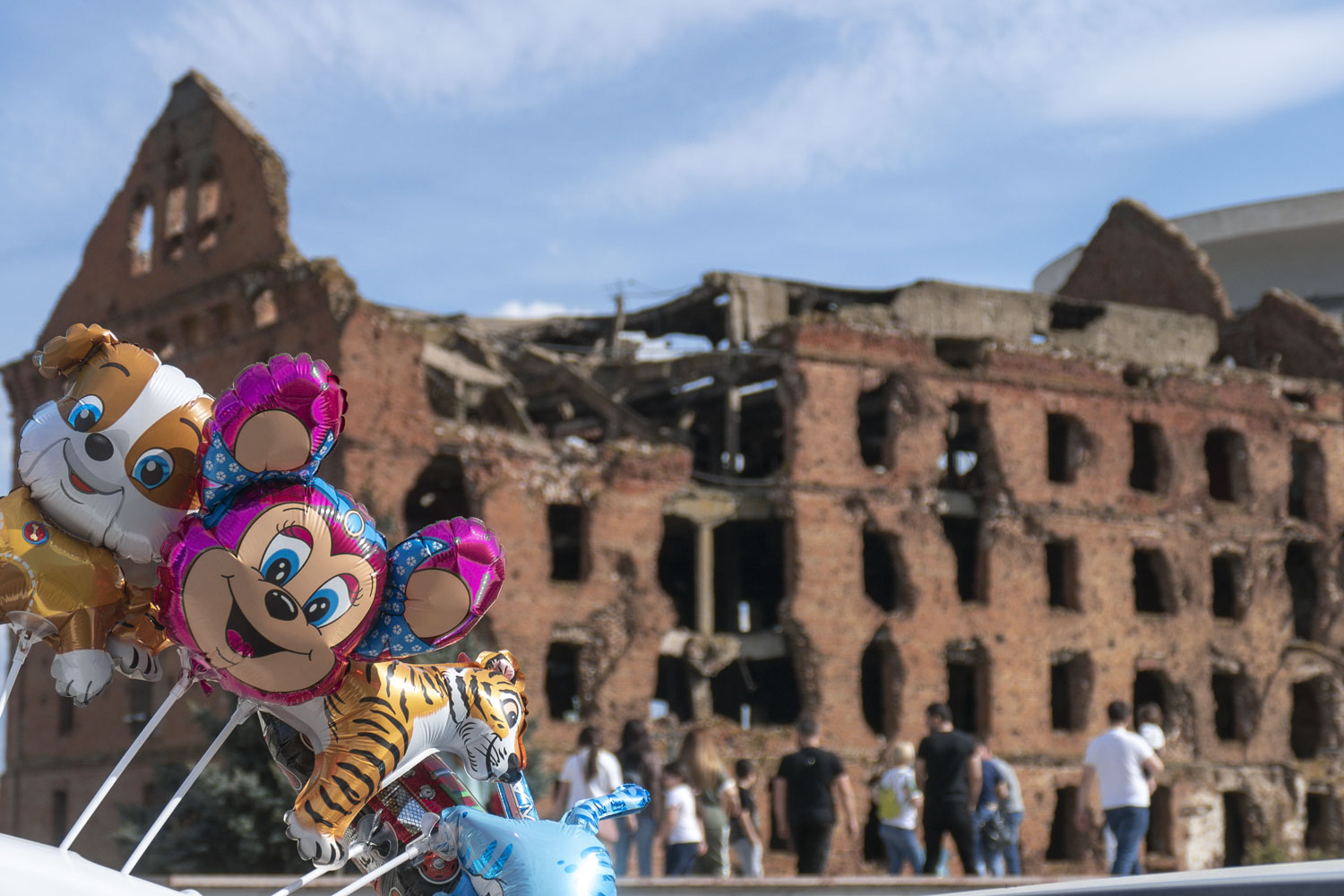
Across from Gerhardt’s mill stands another famous monument of the Battle of Stalingrad — Pavlov’s House. They are often confused, although the house is as different from the mill as a two-headed eagle is from a sickle and hammer.
Pavlov’s House is an ordinary residential building built in the 1930s, which was unfortunate to be in the center of the Battle of Stalingrad.
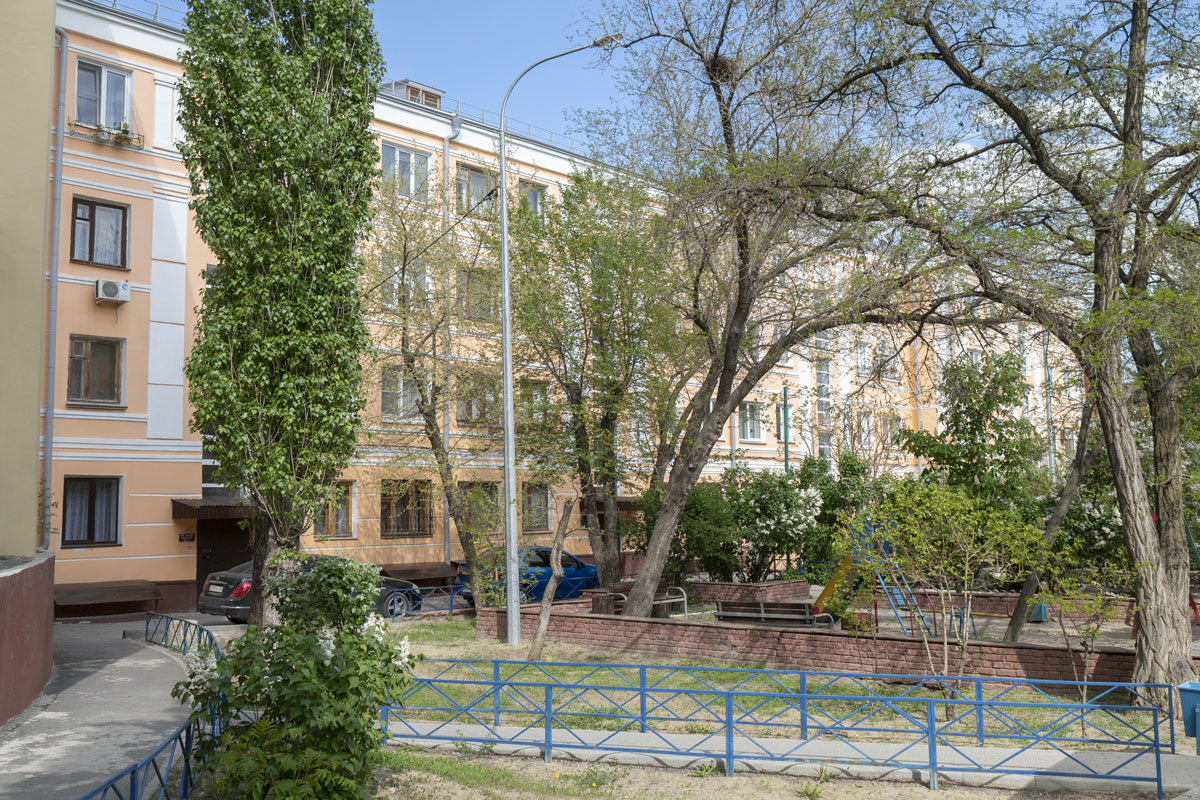
The Battle of Stalingrad was characterized by absolute madness. It is probably the bloodiest battle in world history, during which almost 3 million people were affected on both sides.
Stalingrad was a strategically important city in the German offensive. It gave the enemy access to the oil fields in Baku and allowed them to cut off the movement of food along the Volga, as well as the supply of equipment through lend-lease, half of which went through Iran and the Caucasus. In addition, Stalingrad had ideological significance due to its name being associated with Stalin.
Therefore, the battles in Stalingrad were fought in an absolutely desperate manner. If in a regular war they fight for cities and quarters, then in Stalingrad they fought for every building, entrance, floor, and bench. Objects constantly changed hands, sometimes several times a day.
Pavlov’s House is an outstanding example of heroism. A small group of 20 soldiers led by Yakov Pavlov defended the building for 58 days. During this time, it was attacked dozens of times by the Germans and bombed from the air. The enemy attacked Pavlov’s group for two months and was only able to take back the first floor. However, Anatoly Chekhov alone destroyed about 200 Germans, for which he was awarded the medal on the spot. The total count of the killed goes into thousands.
The Germans never figured out how this house was supplied with food and ammunition. There’s nothing left of the house now except for an improvised memorial wall on one of its ends.
Nowadays, Pavlov’s house is a regular residential building. There’s a Soviet-style sign next to it stating that it’s an exemplary dwelling. I wouldn’t want to live here.
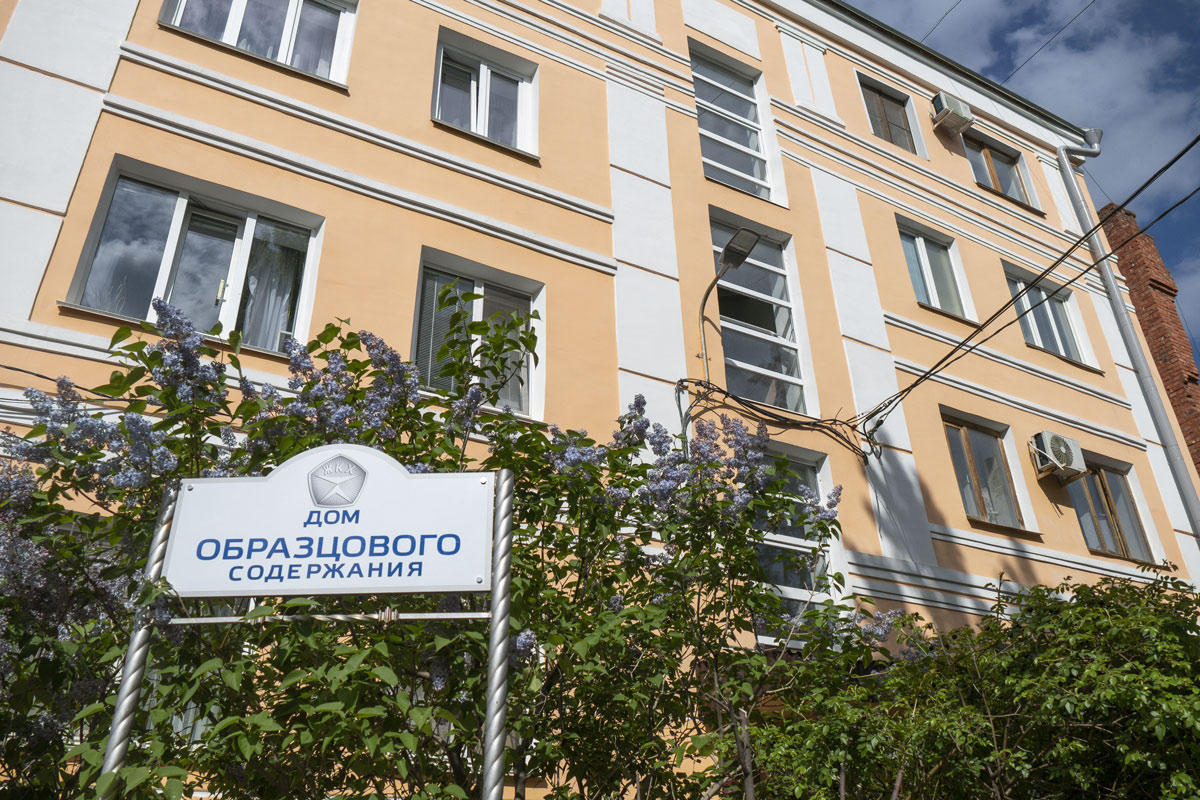
On the other hand, the house has turned into a memorial monument.
Another living war monument is Lyudnikov’s command post, the remains of a small brick house that served as the headquarters of General Ivan Lyudnikov.
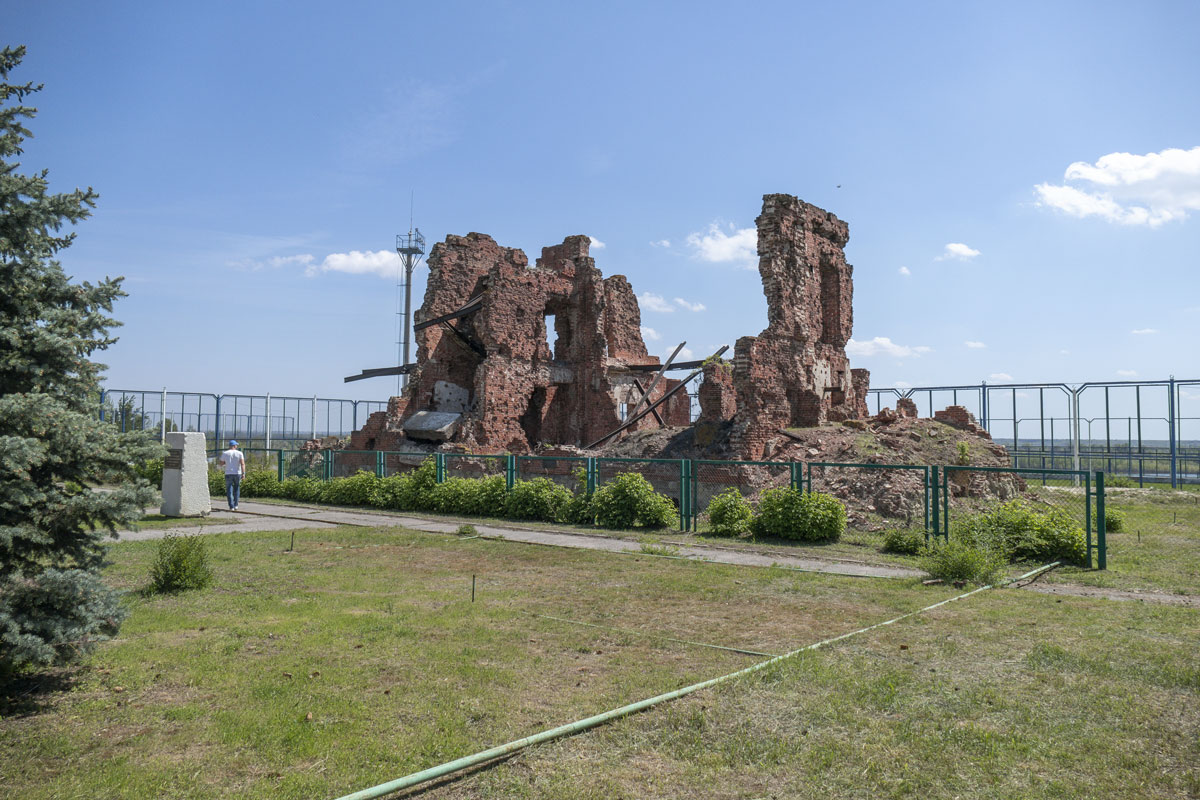
Lyudnikov’s division is famous for holding the defense of a tiny piece of land measuring 700x400 meters for two months. After receiving reinforcements, the division launched an offensive, defeated the enemy, and the patch of land was named “Lyudnikov Island”.
The command post was almost completely destroyed, with only a couple of walls remaining. It’s in an emergency state and theoretically, it’s not safe to approach, but no one stops you from sneaking through a gap in the fence.
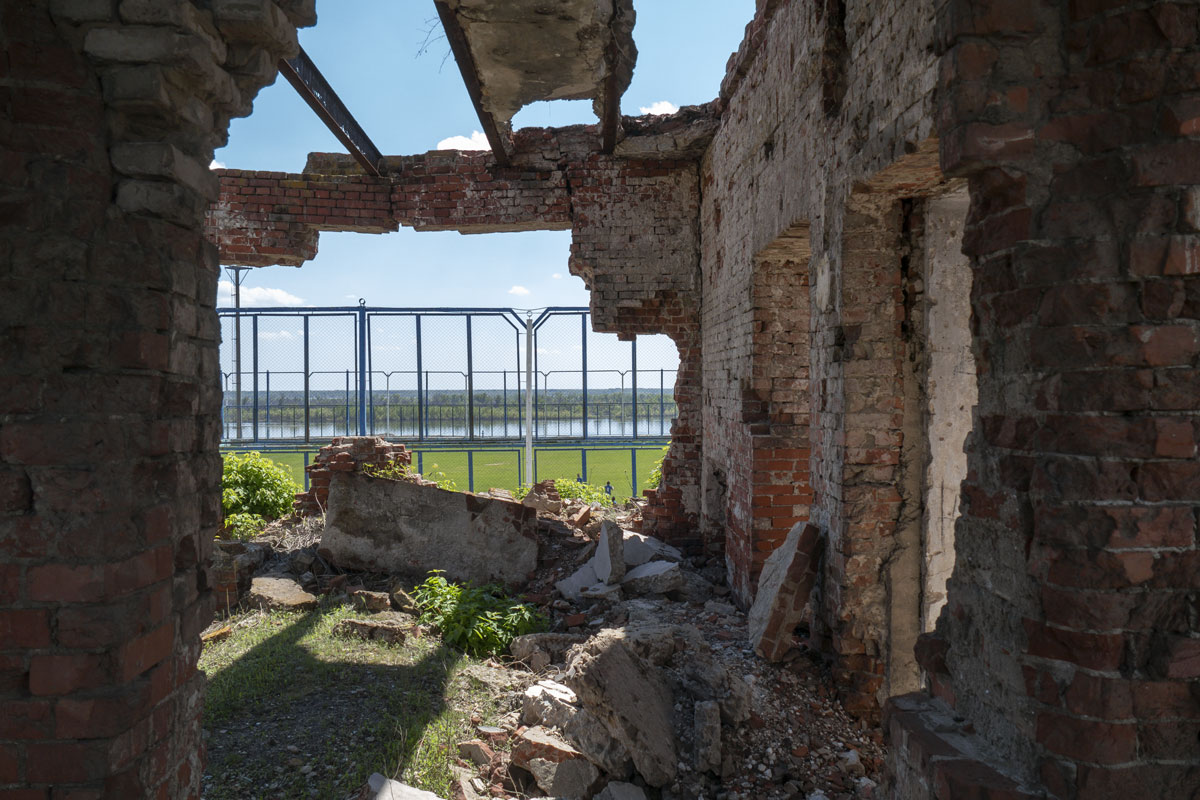
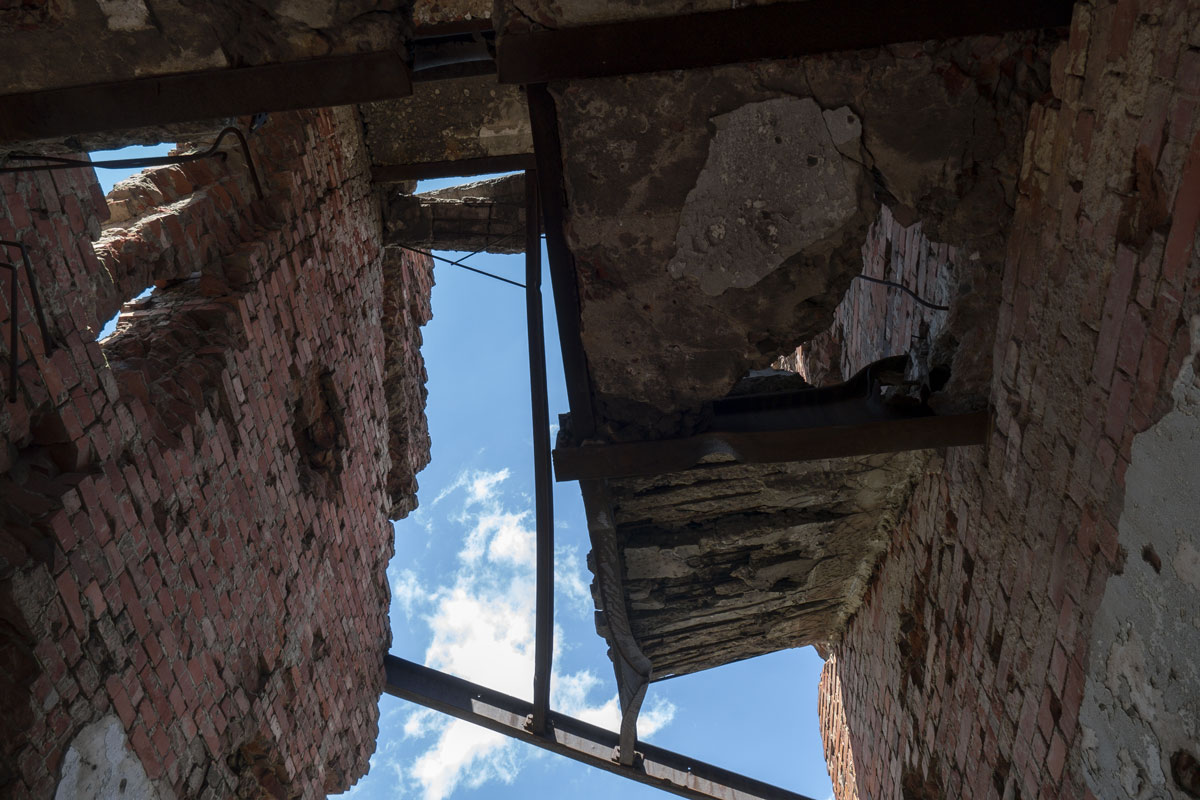
Unlike Gerhardt’s mill, the post was left abandoned. It’s located quite far from the center and attracts fewer tourists.
Lyudnikov Island is located behind the Barricades plant. The historical district of Volgograd, Nizhnie Barrikady settlement, is also preserved here.
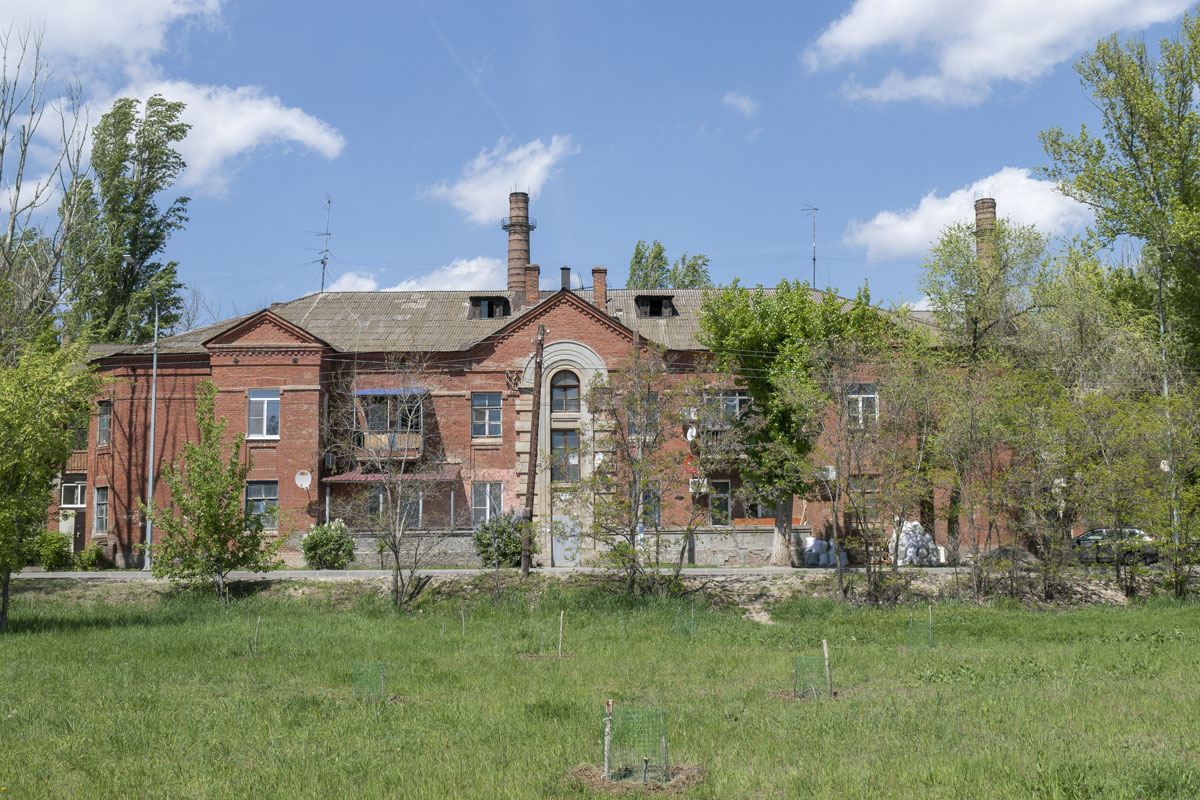
Nizhnie Barrikady is a charming place. Some houses in this settlement have survived from pre-war times, which is incredible considering that Volgograd was almost completely destroyed during the war.
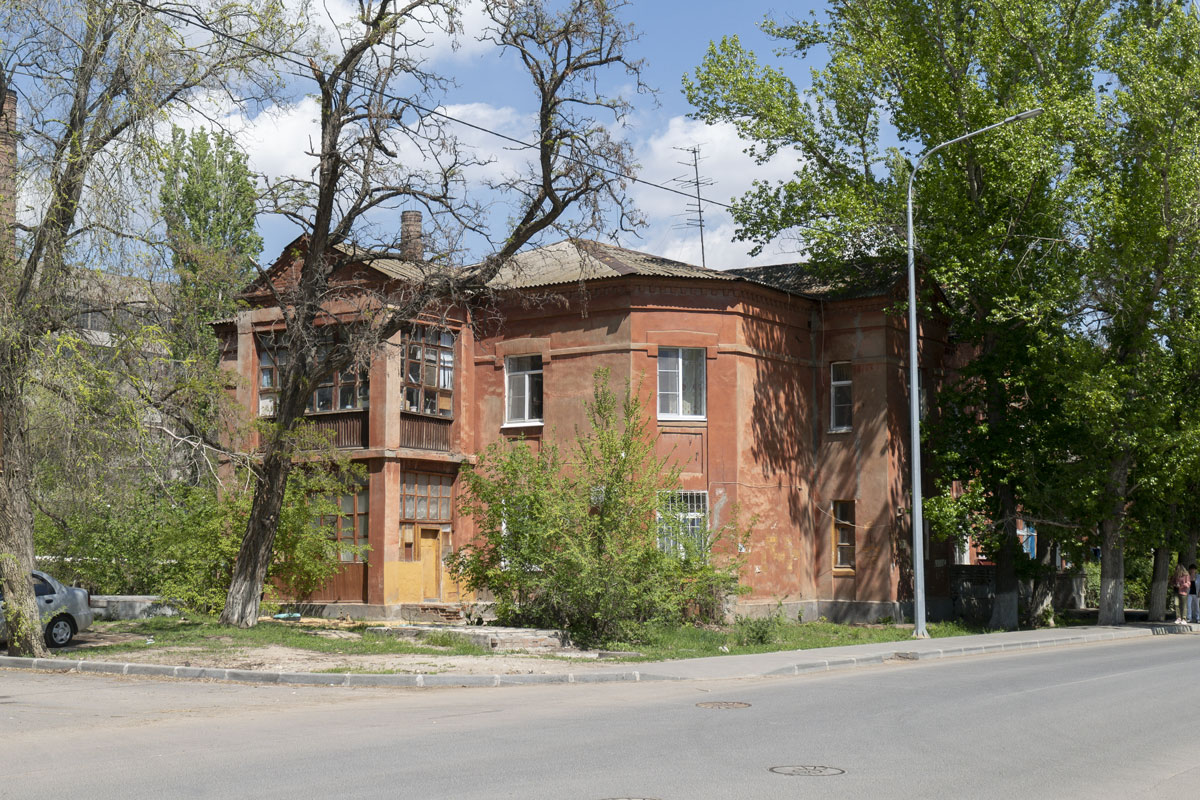
In the settlement, there is a school located in a beautiful historic building. In the courtyard, there’s a monument to Gorky.
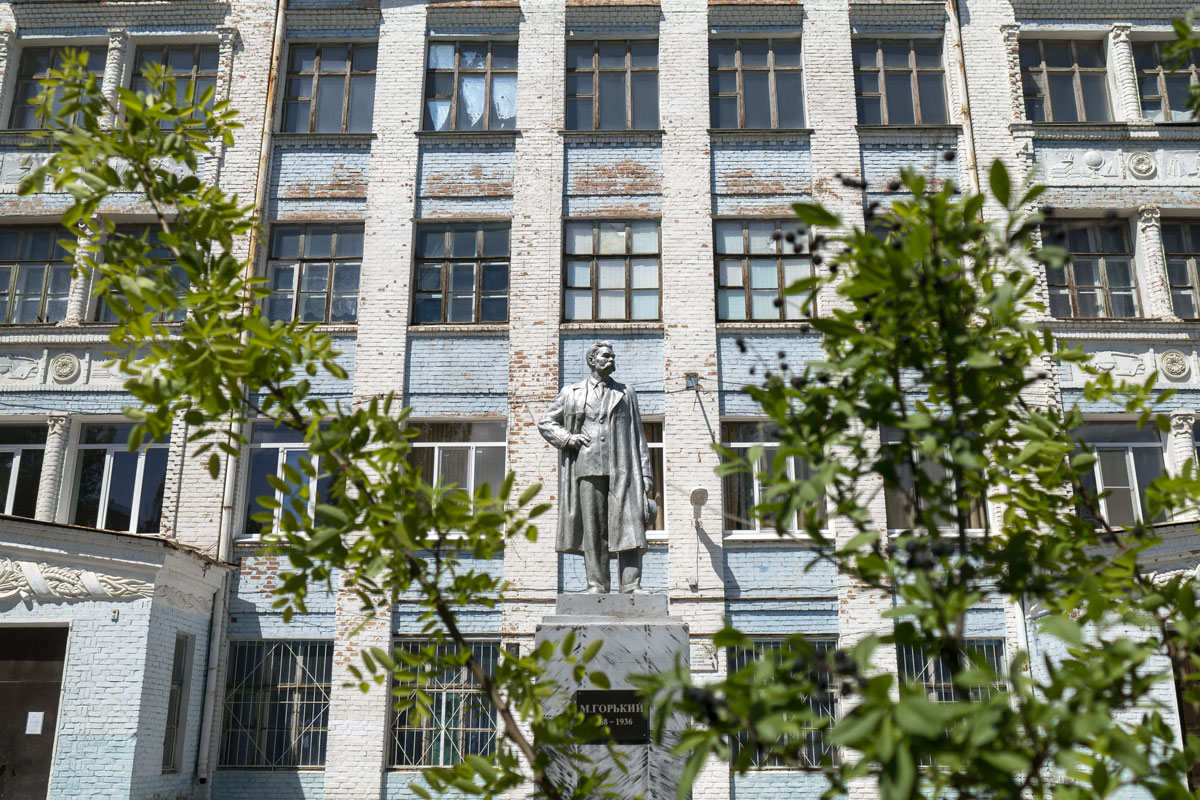
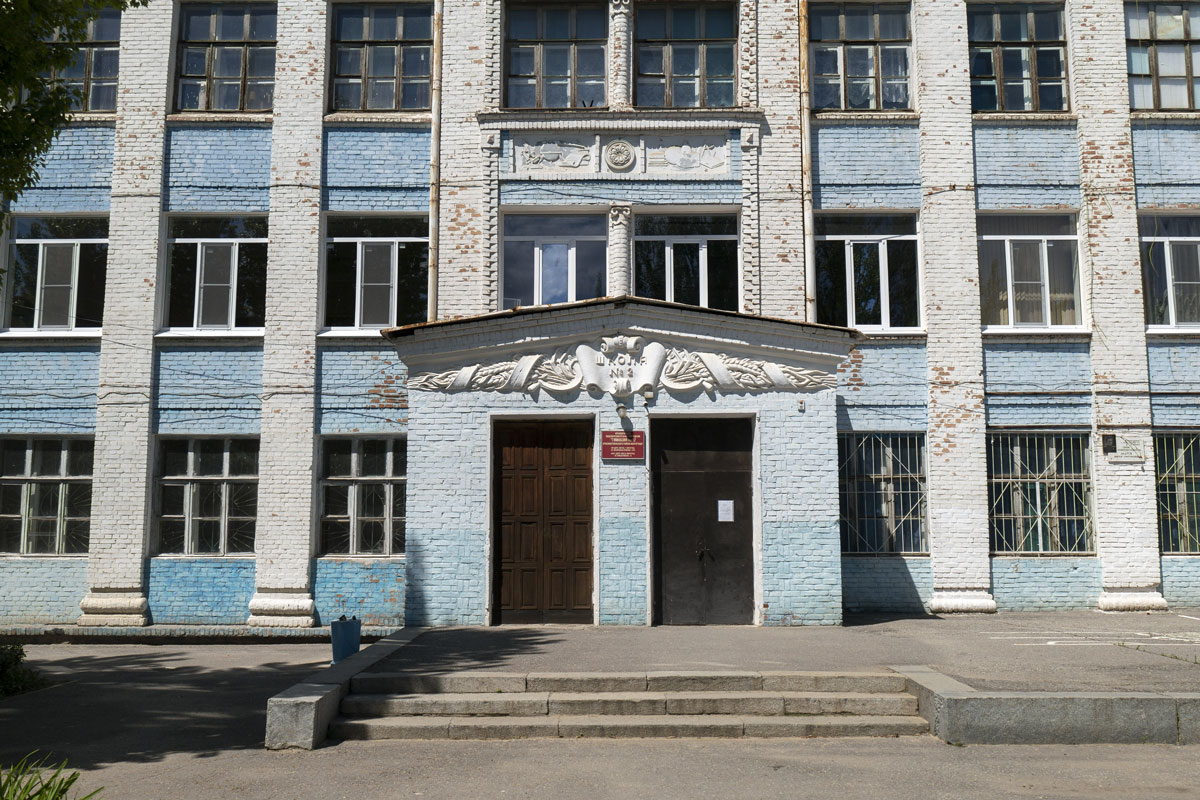
The settlement itself is quite poor but monstrously colorful.
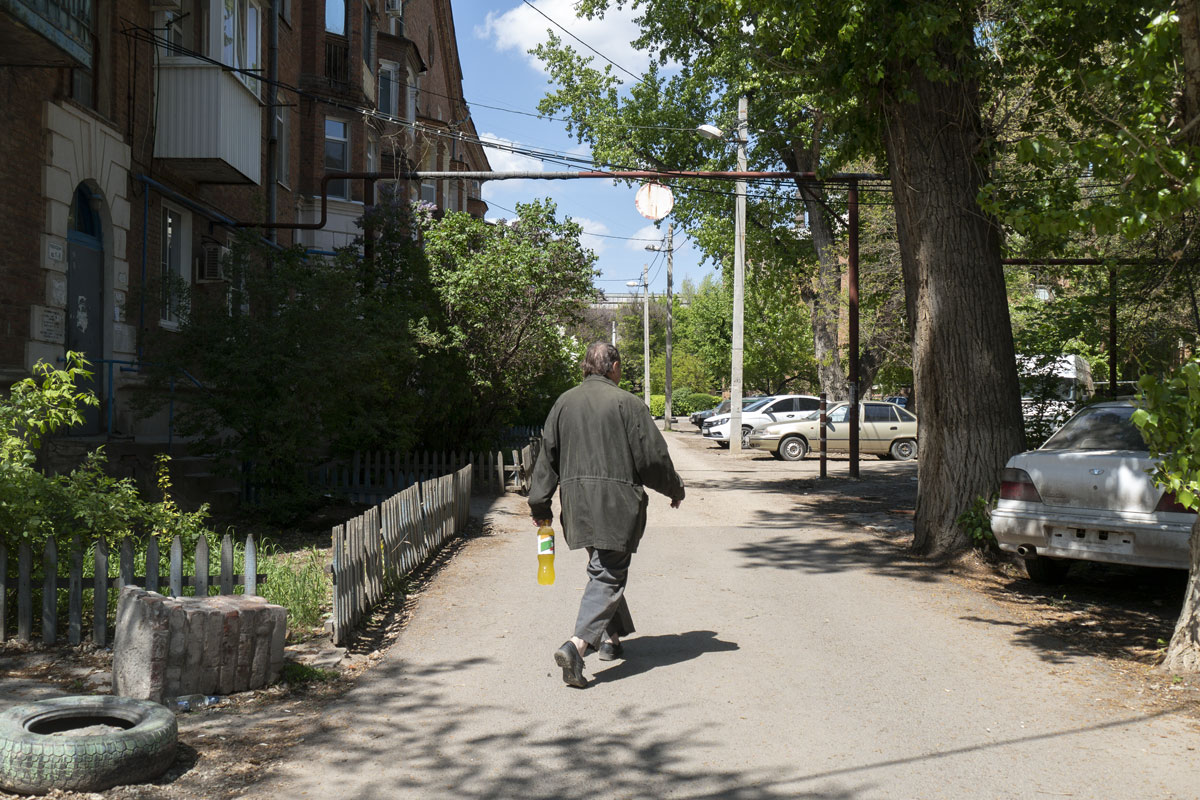
The houses stand in two modest rows, and behind them, you can see a plant.
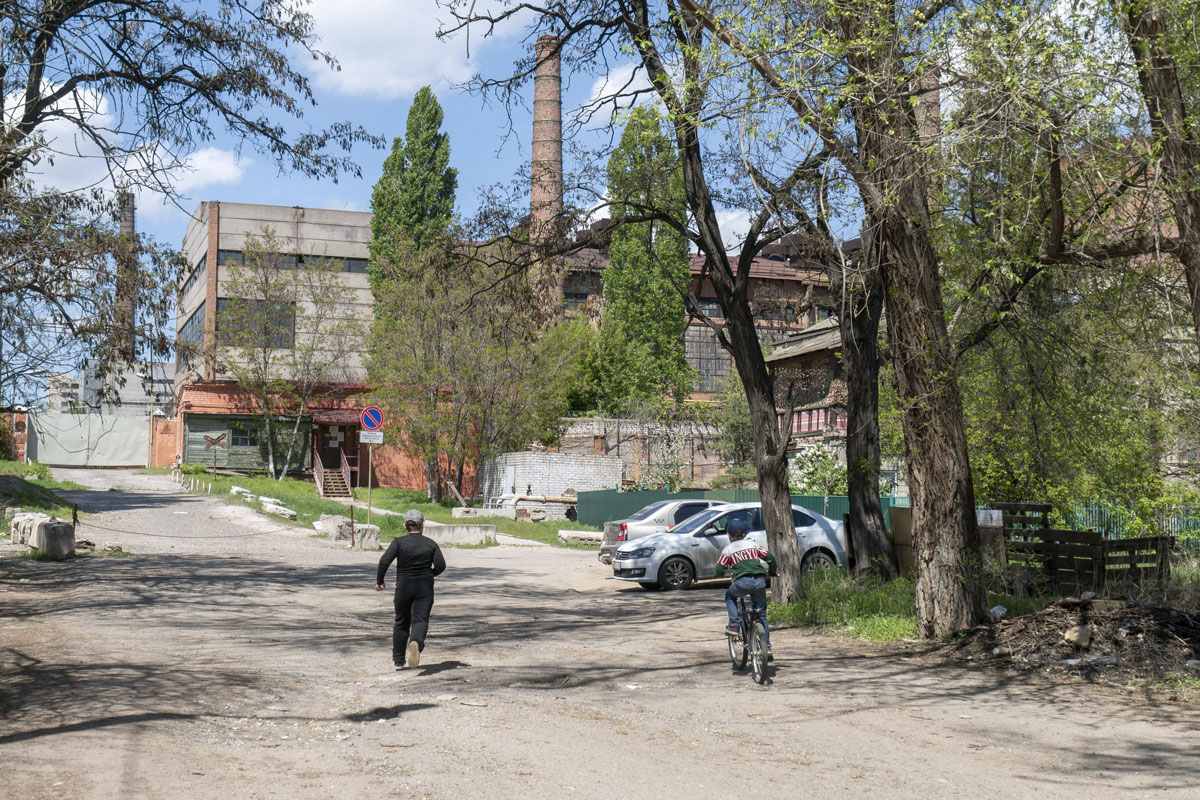
The houses are built in some god-knows-what style. What is this, a Soviet Edinburgh?
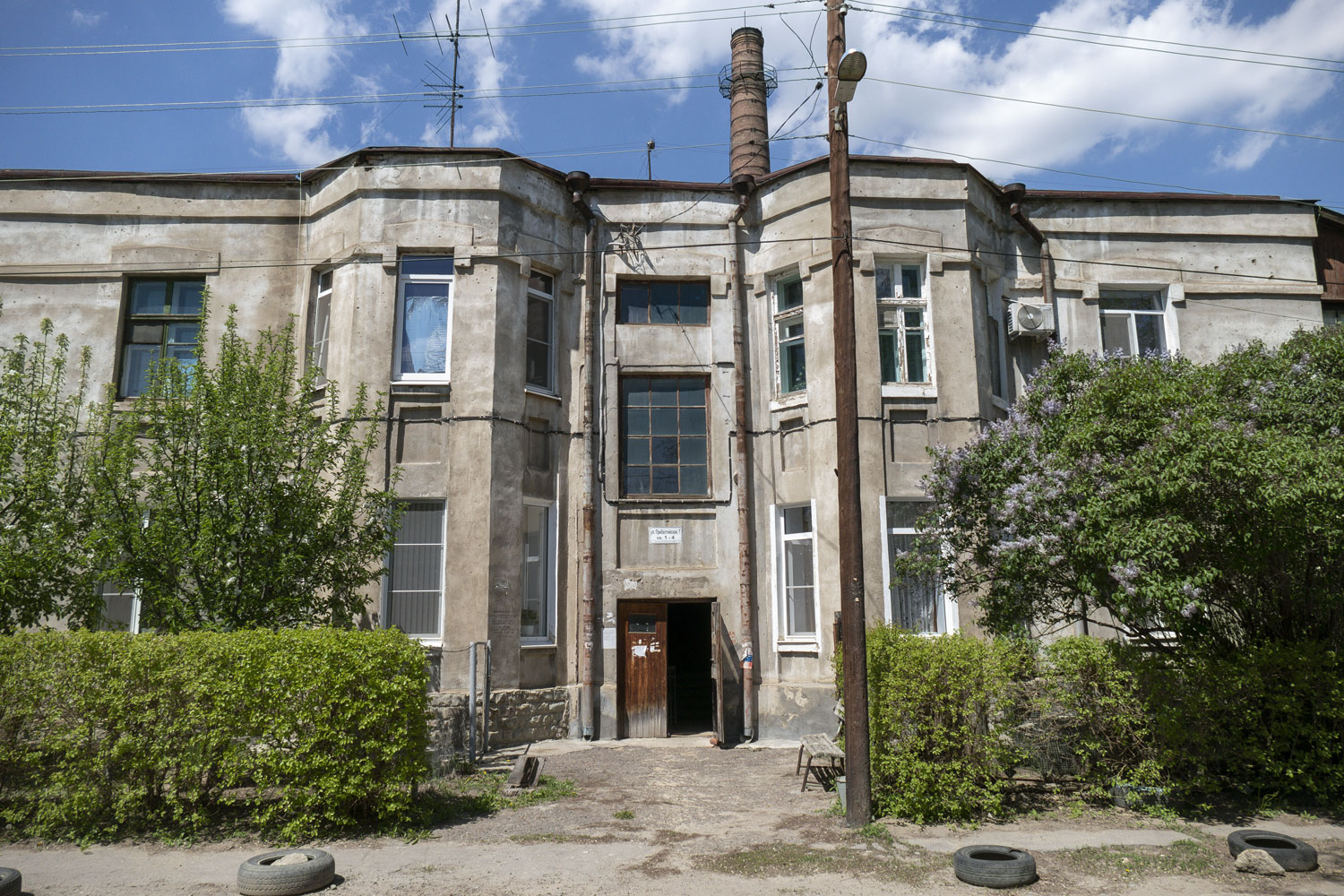
Stone-like houses have annexes that make them look like an illegitimate offspring of a dacha cooperative and a reinforced concrete plant.
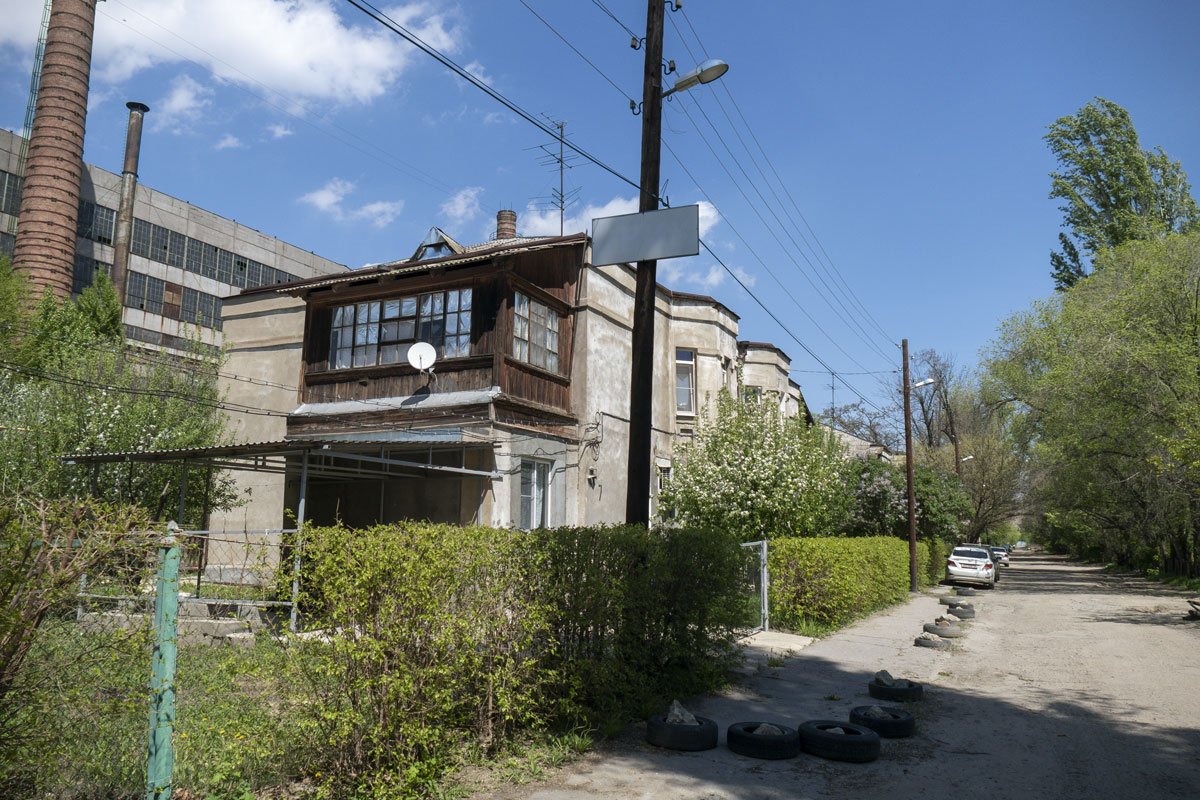
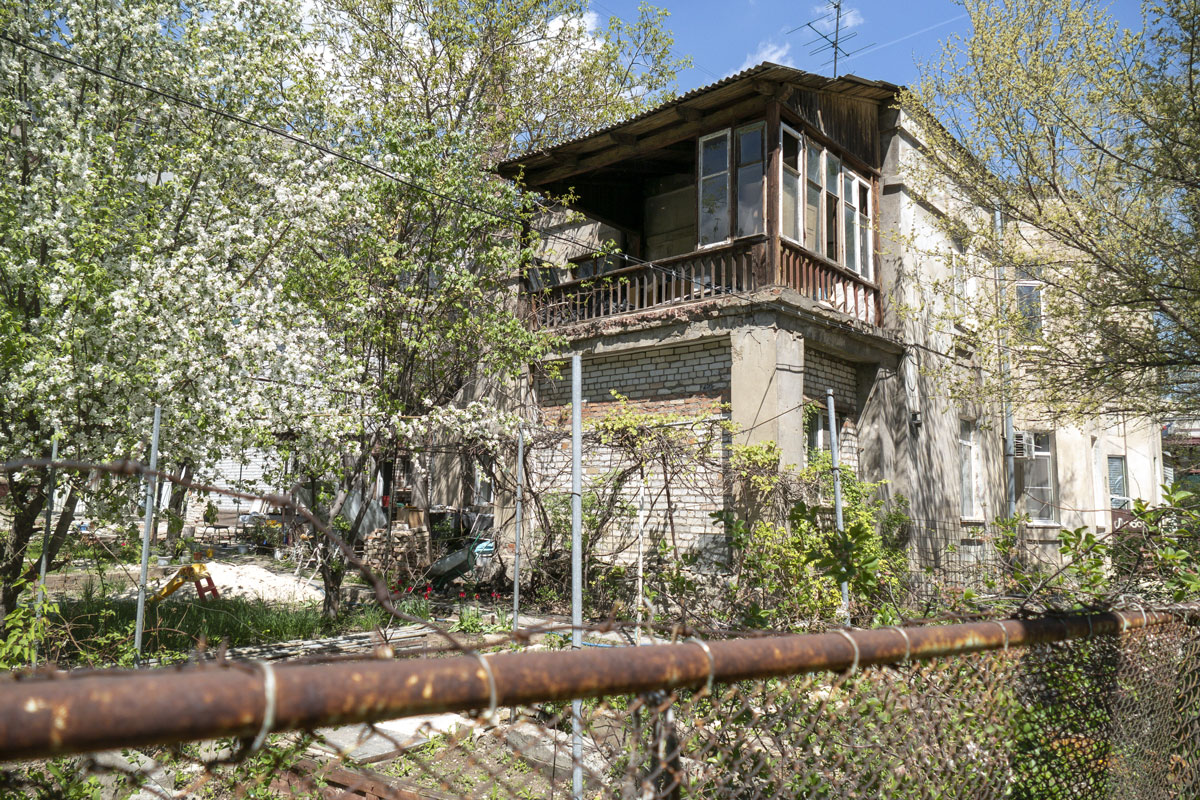
In addition, the entire street is overgrown with lilacs up to the ears.
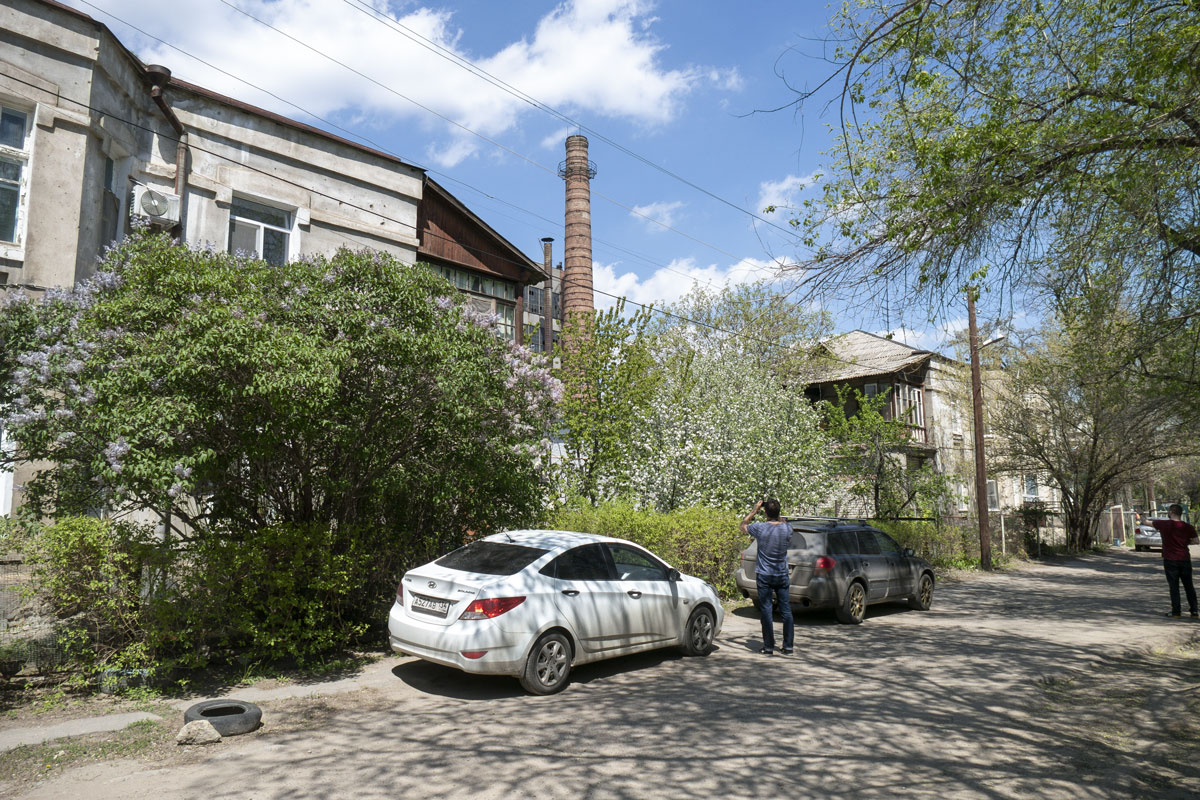
And through all this beauty, giant factory workshops can be seen.
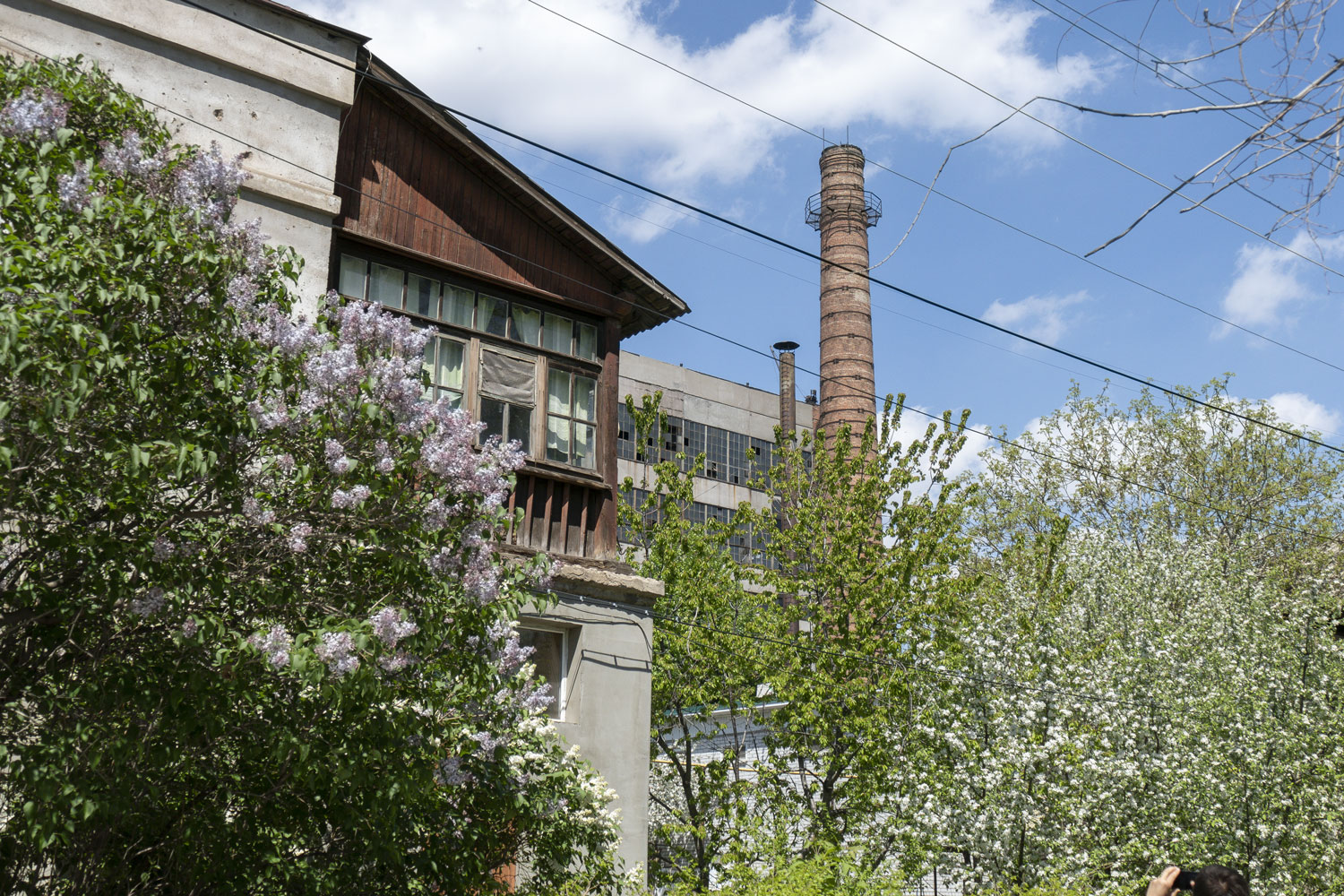
Their windows are broken, and the plant itself is barely making ends meet. But what an incredible landscape the settlement provides! It’s just a factory post-apocalypse. Orwell’s dystopias and Gibson’s cyberpunks can’t hold a candle to what Volgograd offers in Nizhnie Barrikady. You could shoot a movie here.
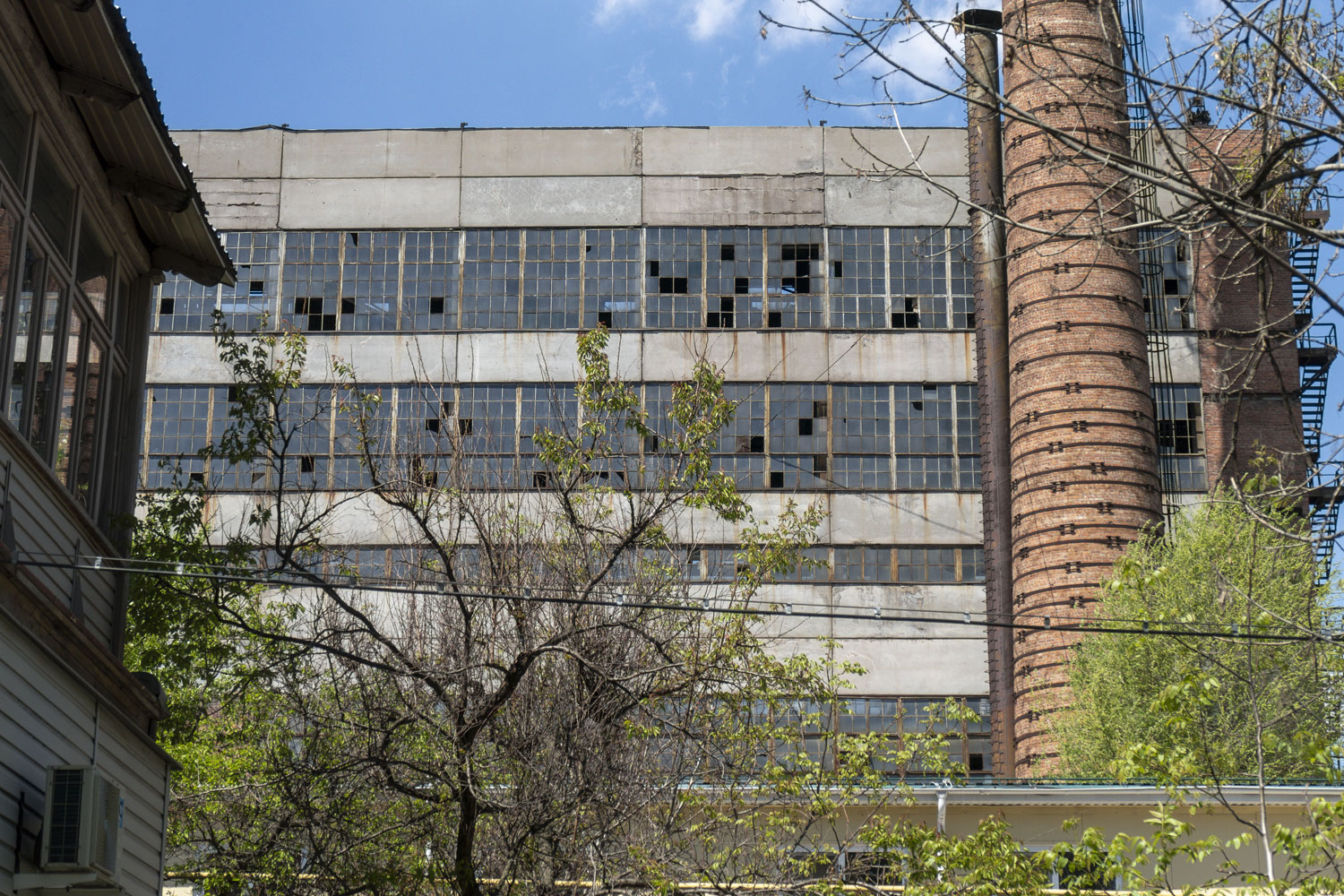
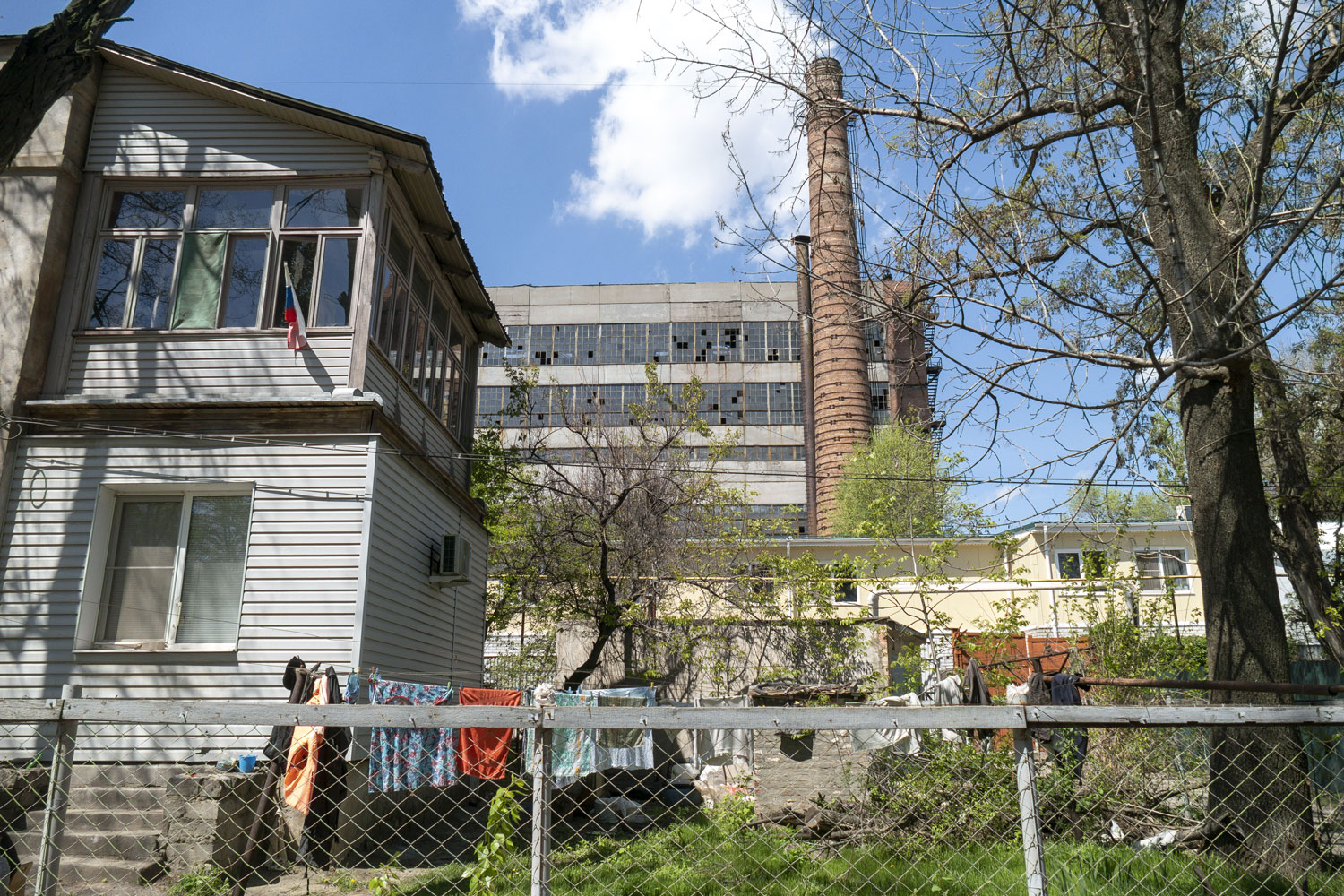
Nizhnie Barrikady is definitely worth a visit if you find yourself in Volgograd. It’s a lost gem of the city.
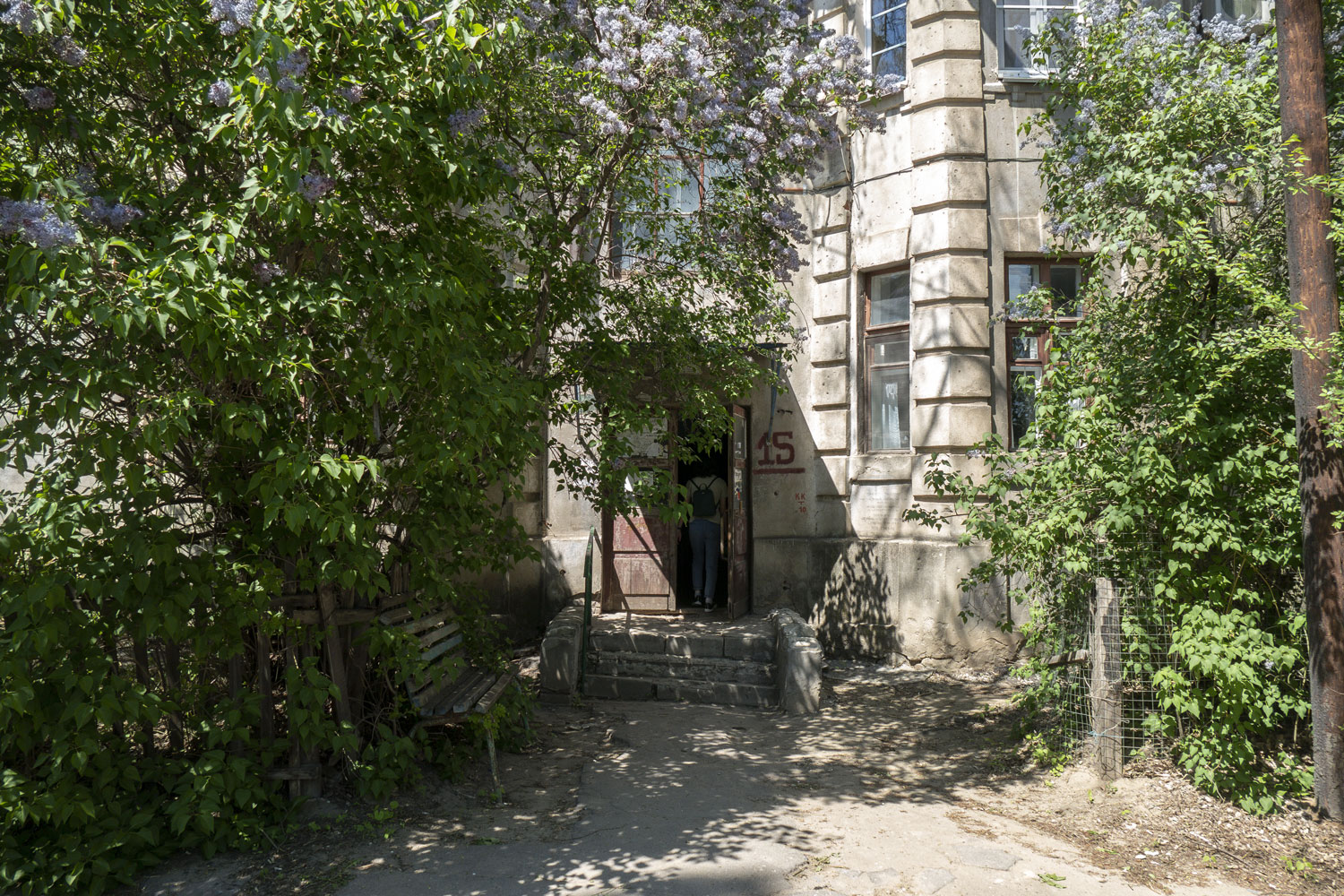
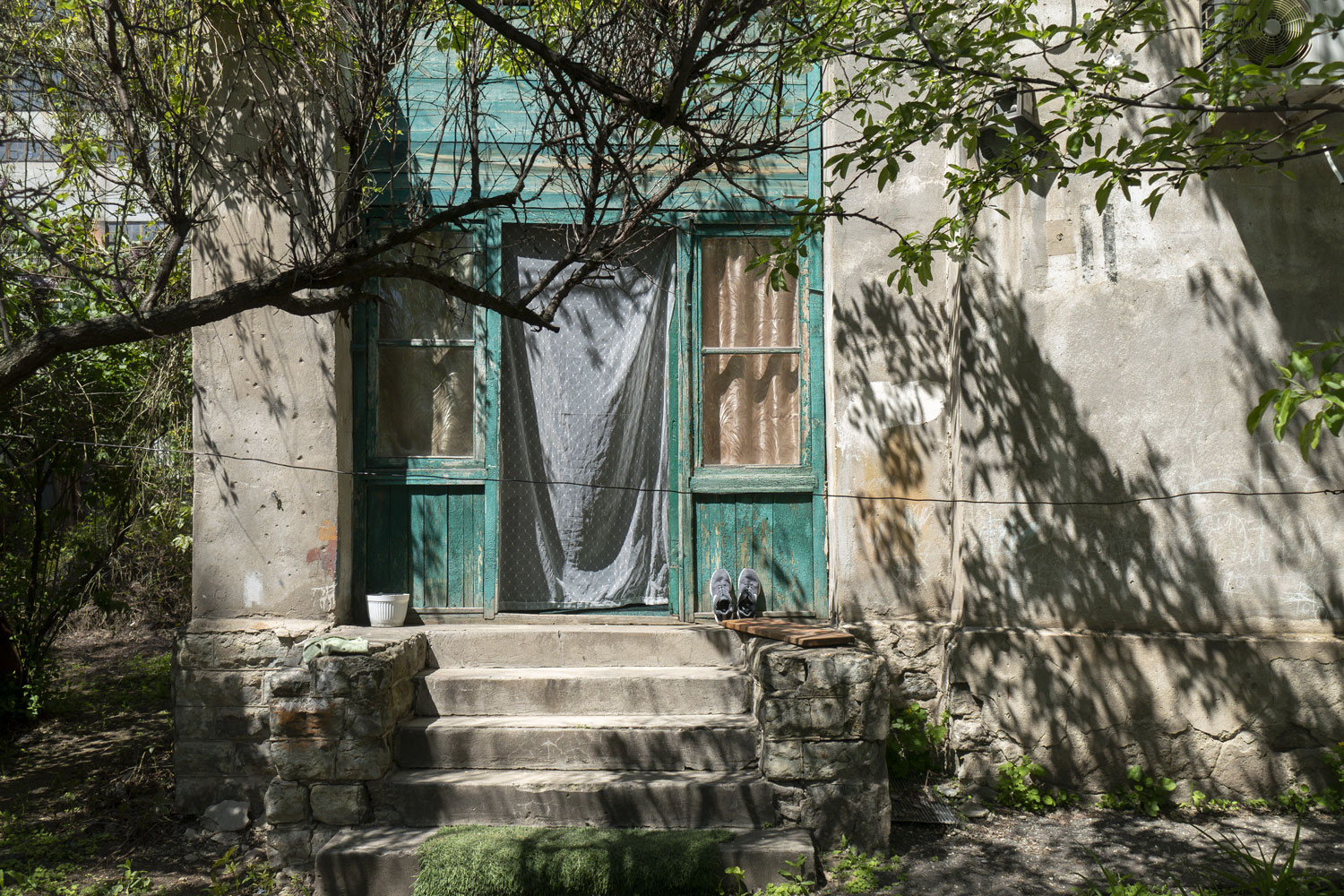
It’s a shame that the settlement, like the plant, is in atrocious condition. I wouldn’t be surprised if in ten years neither of them exists.





If the reader is unlucky and doesn’t catch the settlement while it’s still standing, there will still be plenty to see in Volgograd.
At one end of the city stands an old elevator built in 1936. The enormous elevator survived because it served as a crucial sniper vantage point. The battles for this strategic object were very serious.
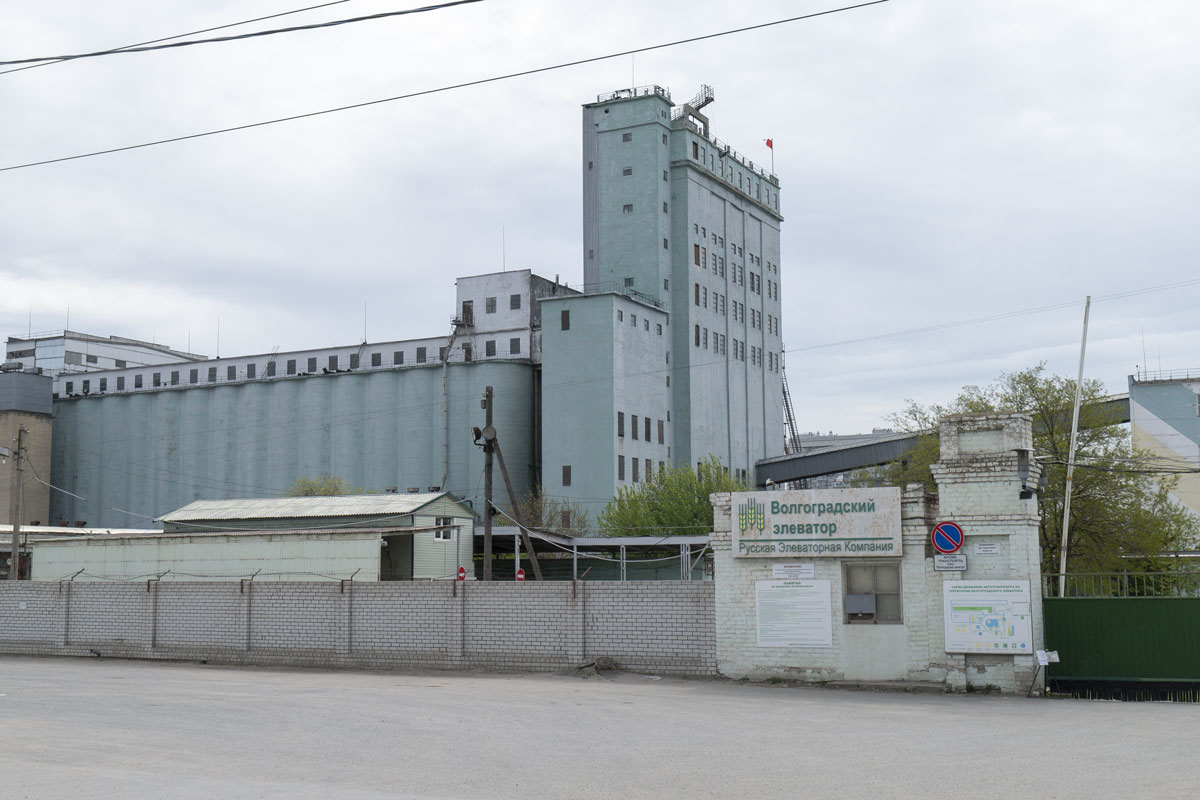
The elevator still operates and has been declared a cultural heritage site. It’s not possible to get close to it as it’s located on the factory grounds.
At the other end of Volgograd are the remains of a tractor factory.
This plant, built according to an American project, initially produced tractors but was later retooled to produce and repair tanks. The plant didn’t stop working until the fighting started on its territory. The workers themselves joined the militia en masse.
There’s a T-34 tank standing in front of the plant.
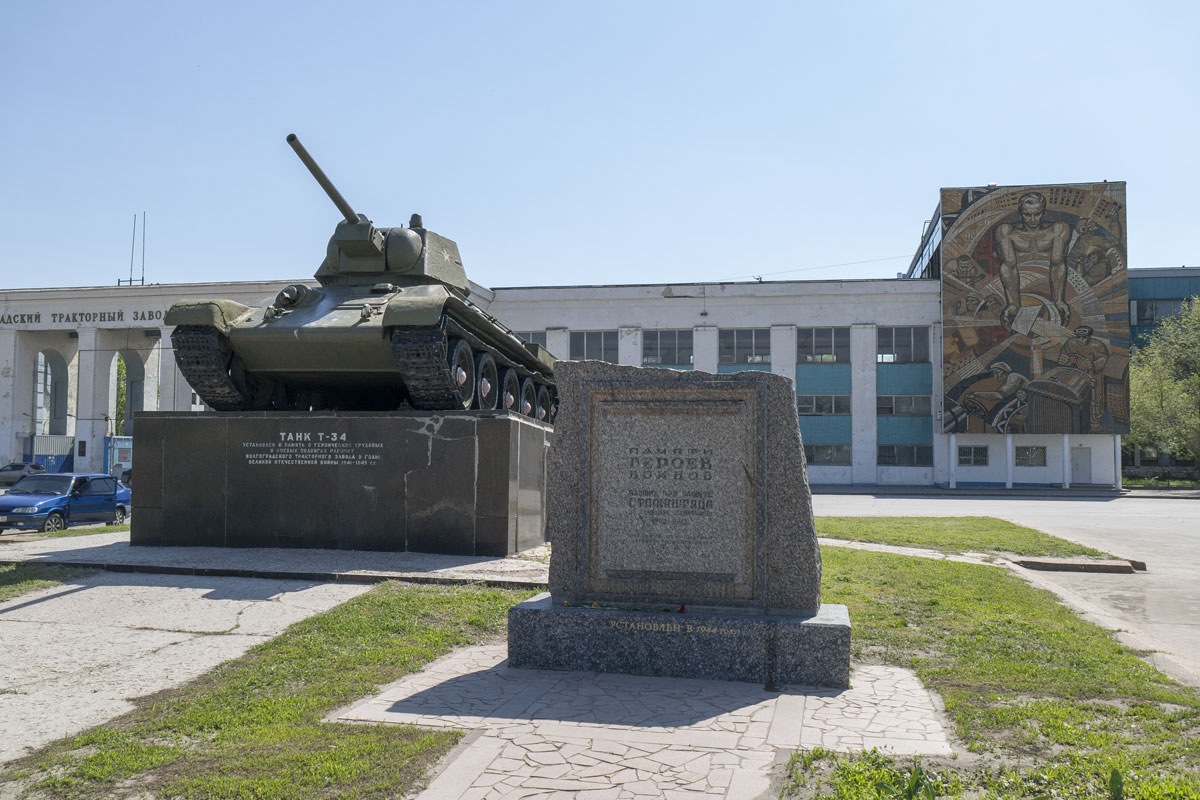
Only the historical facade of the plant remains.
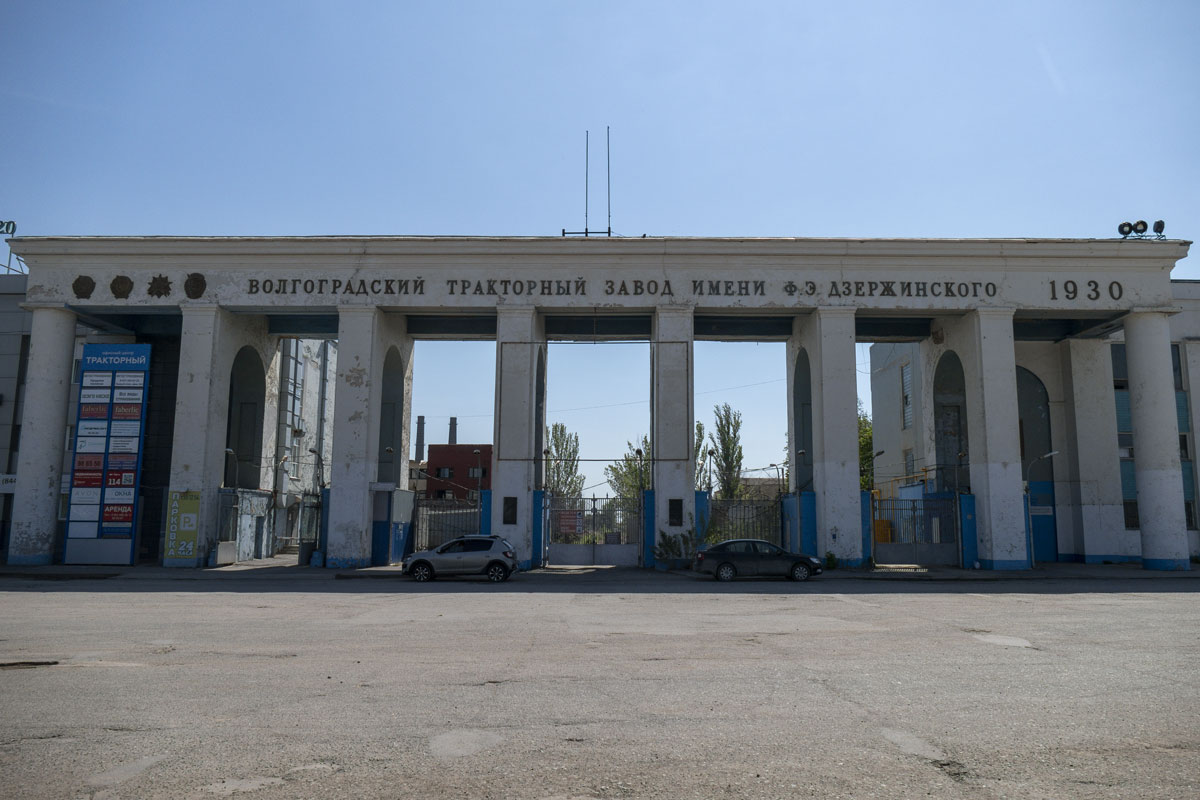
Behind the gates, there’s a clean field littered with the remains of the plant workshops. What irony: a plant that survived Hitler didn’t survive Putin and went bankrupt in 2018. Truly, this country can only be destroyed from within.
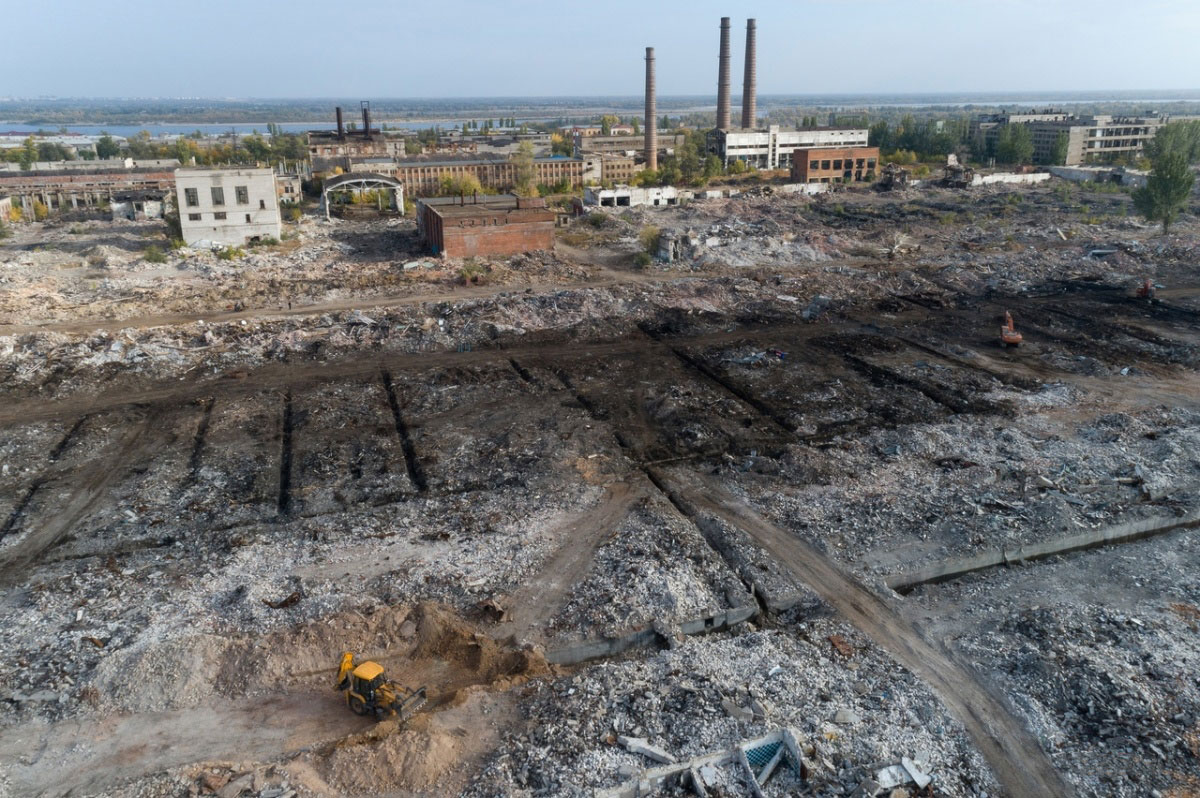
In the yards next to the factory, blocks that survived the Nazi invasion were found.
But some even survived the Gorbachev’s restructuring.
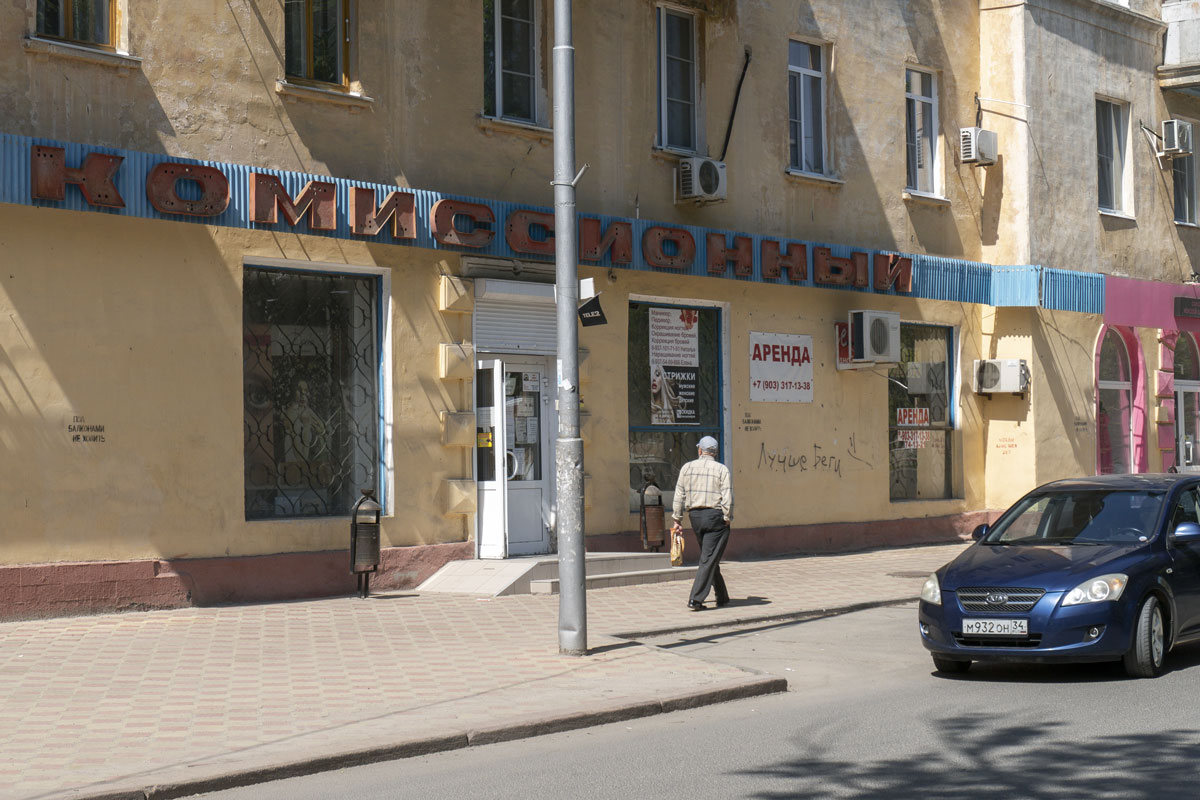
Now fast loans secured by the maternity capital are offered to the survivors.
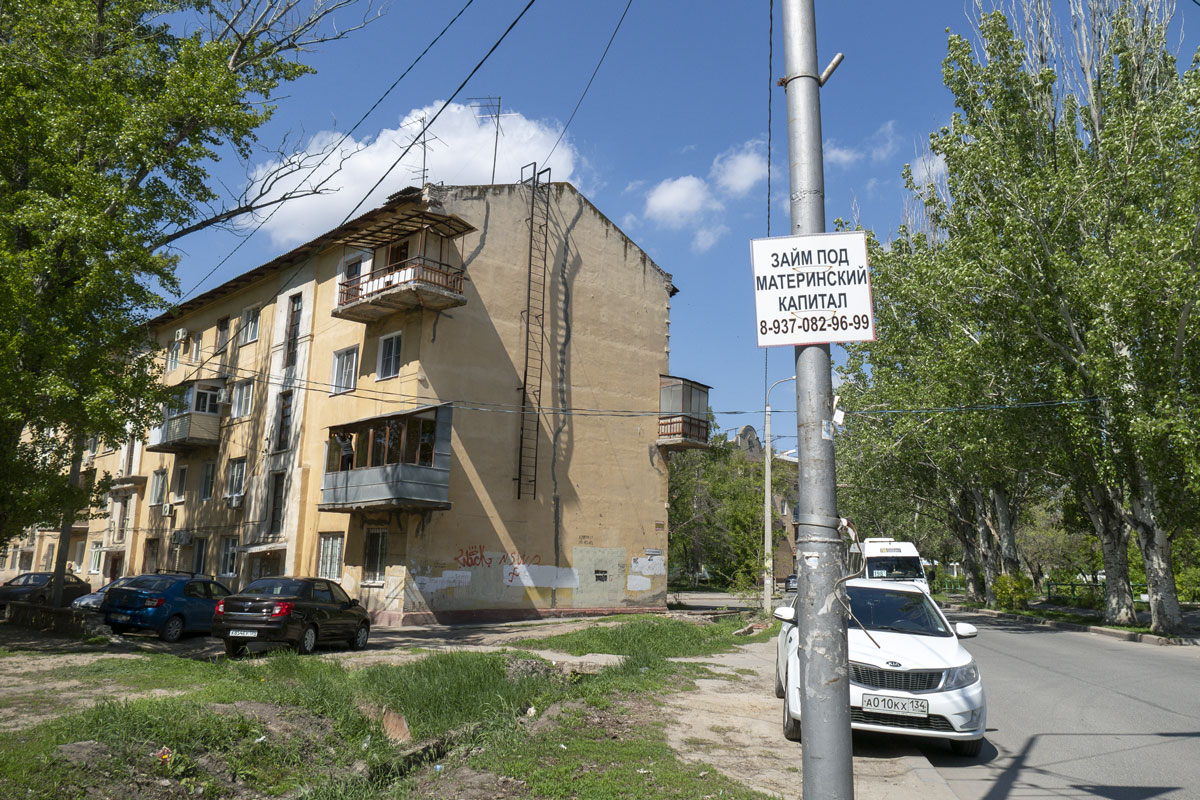
Beauty.
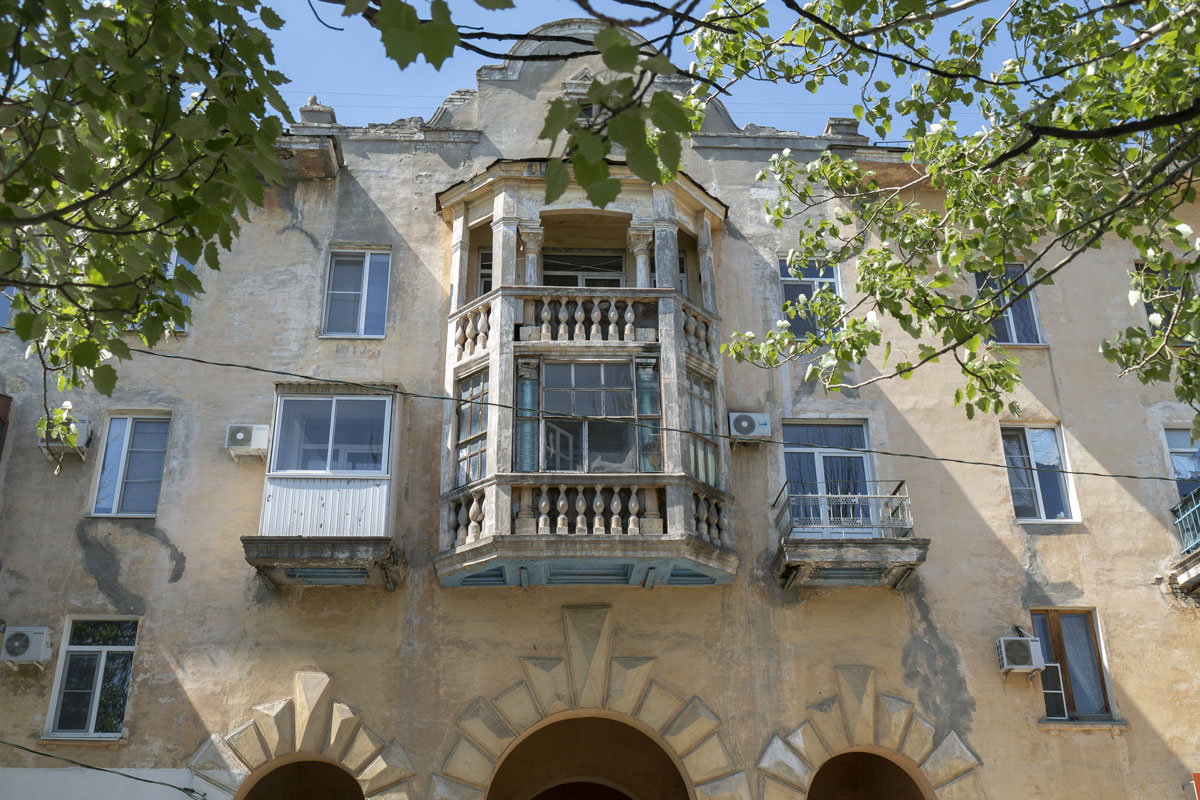
Finally, everything is Soviet-style in the center of Volgograd. Heroes' Alley, Intourist Hotel, Central Department Store, and Alexander Nevsky Cathedral Komsomolsky Garden.
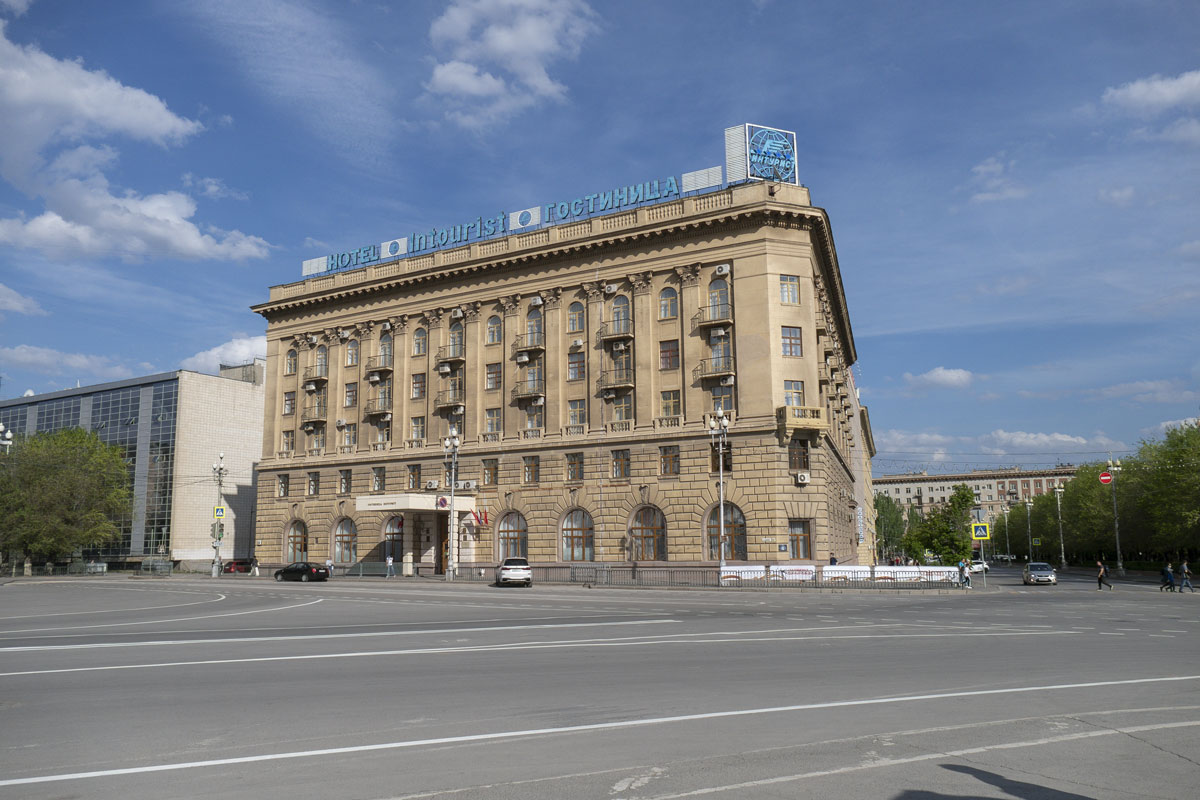
Once the city center became the arena of bloody battles. This is where the decisive battles of the Stalingrad Battle took place.
The Central Department Store has a beautiful Soviet sign preserved. Warm lamp lettering is everything to us.
As can be seen from the comparison of photographs, the historical building and the modern department store do not match. This is because the old building with a semi-circular facade was bricked up in the walls of the Intourist Hotel when the center of Volgograd was remodeled.
You can still find the old building by going to the courtyard behind the hotel. Here it is:
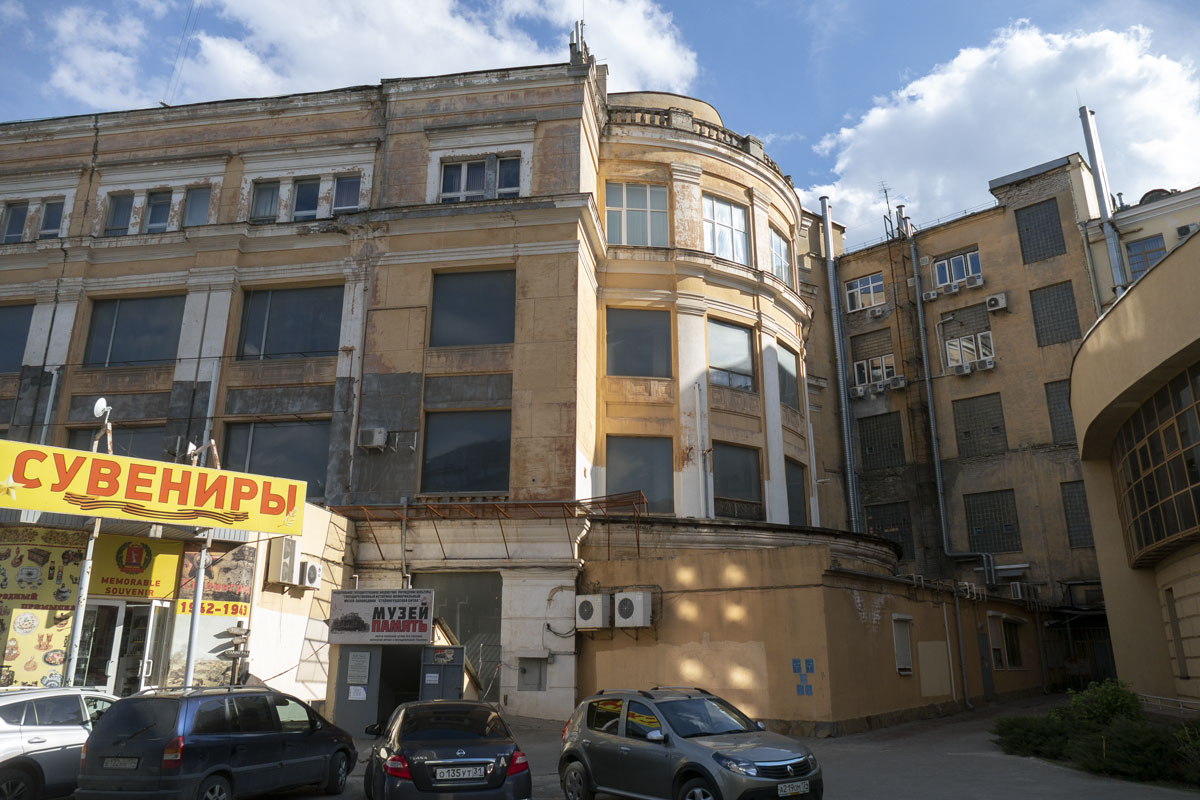
And the department store is famous for the fact that in its basement, General Friedrich Paulus, commander of the German 6th Army, was captured. Before surrendering, Hitler promoted Paulus to Field Marshal, hinting that he should commit suicide: no German Field Marshal had ever surrendered before.
Paulus became the first. Later on, he underwent re-education in the Krasnogorsk camp for German prisoners of war, amazed everyone with his appearance at the Nuremberg Trials, became almost a hero in the USSR, and continued to live happily in Dresden until 1957.
Now there is a museum in the basement of the building, where the life of the last headquarters of the 6th Army, which brought the meat grinder to Stalingrad at the cost of 3 million lives, is recreated.
This is how the Nazis celebrated Christmas:
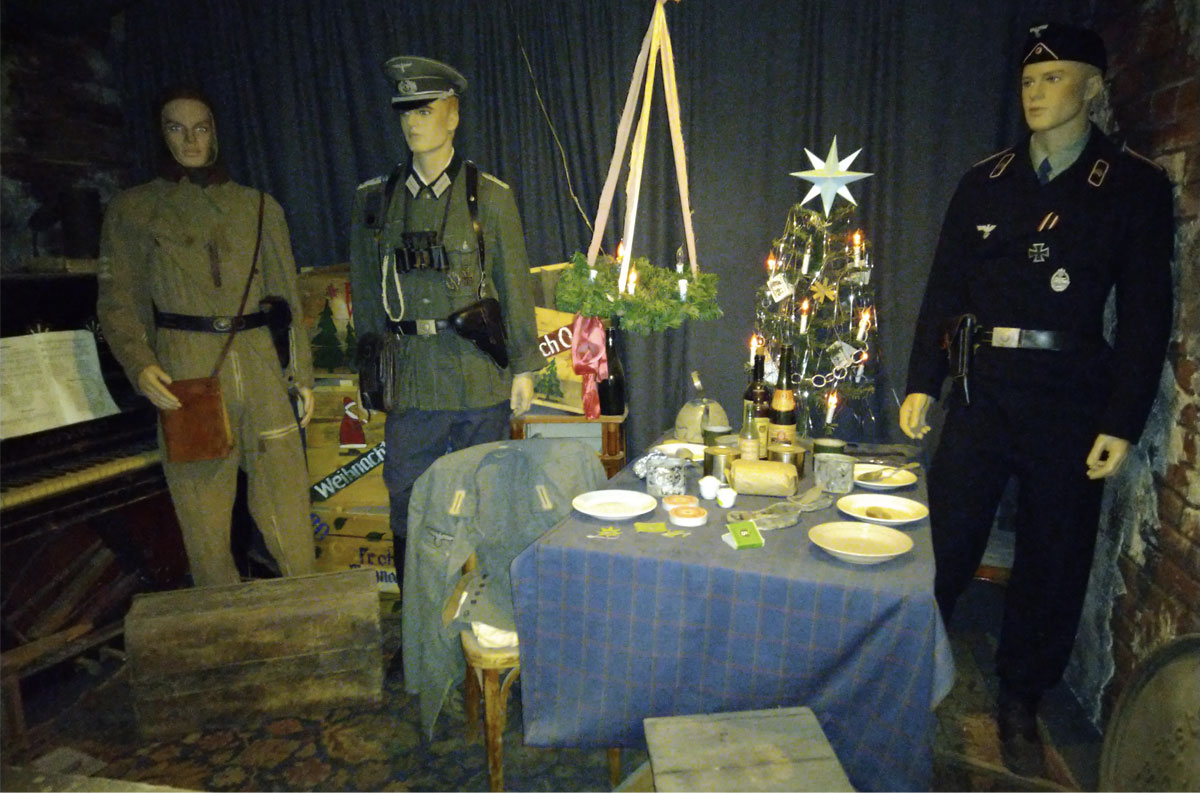
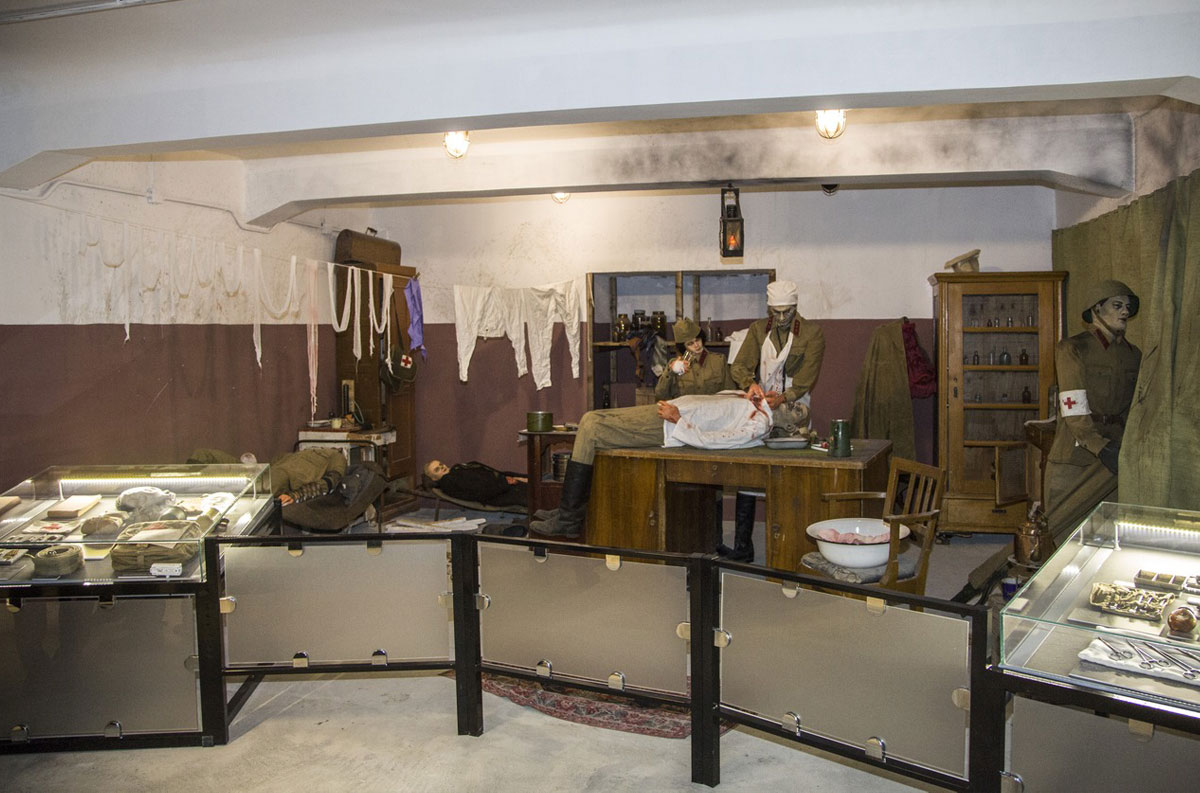
The model of the old department store after the war:
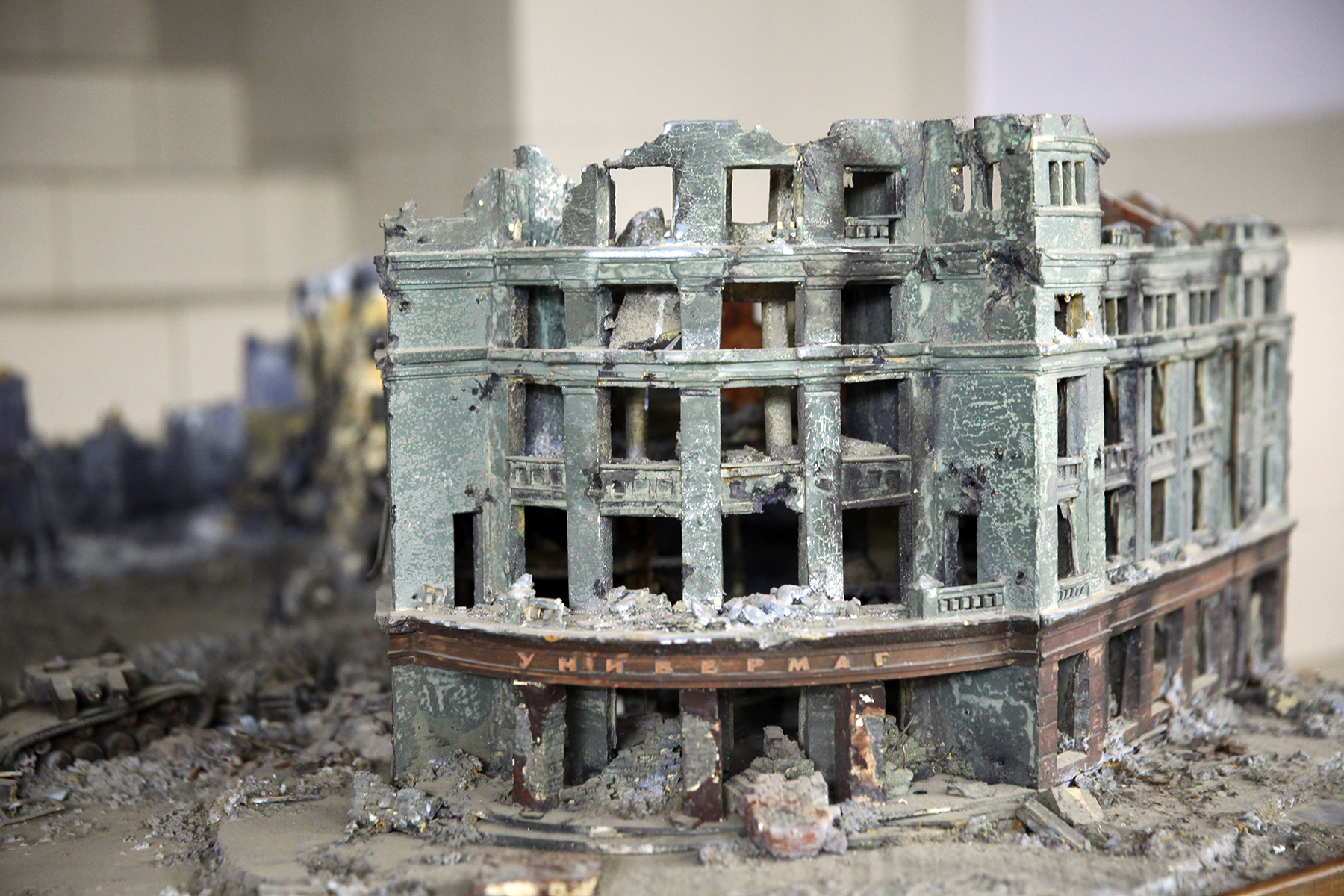
It is a pity that such a historical place was built up and forgotten. The Soviet Union did it. They did not like to remember the war there and held parades only once every 10 years.
Now everyone is obsessed with the war. There is simply no modern idea in Russia that captivates minds. Only an unattractive past and a dubious future remain.
And Volgograd is beautiful regardless of whether parades are held once a year or once in a thousand years. It’s just a good city.


